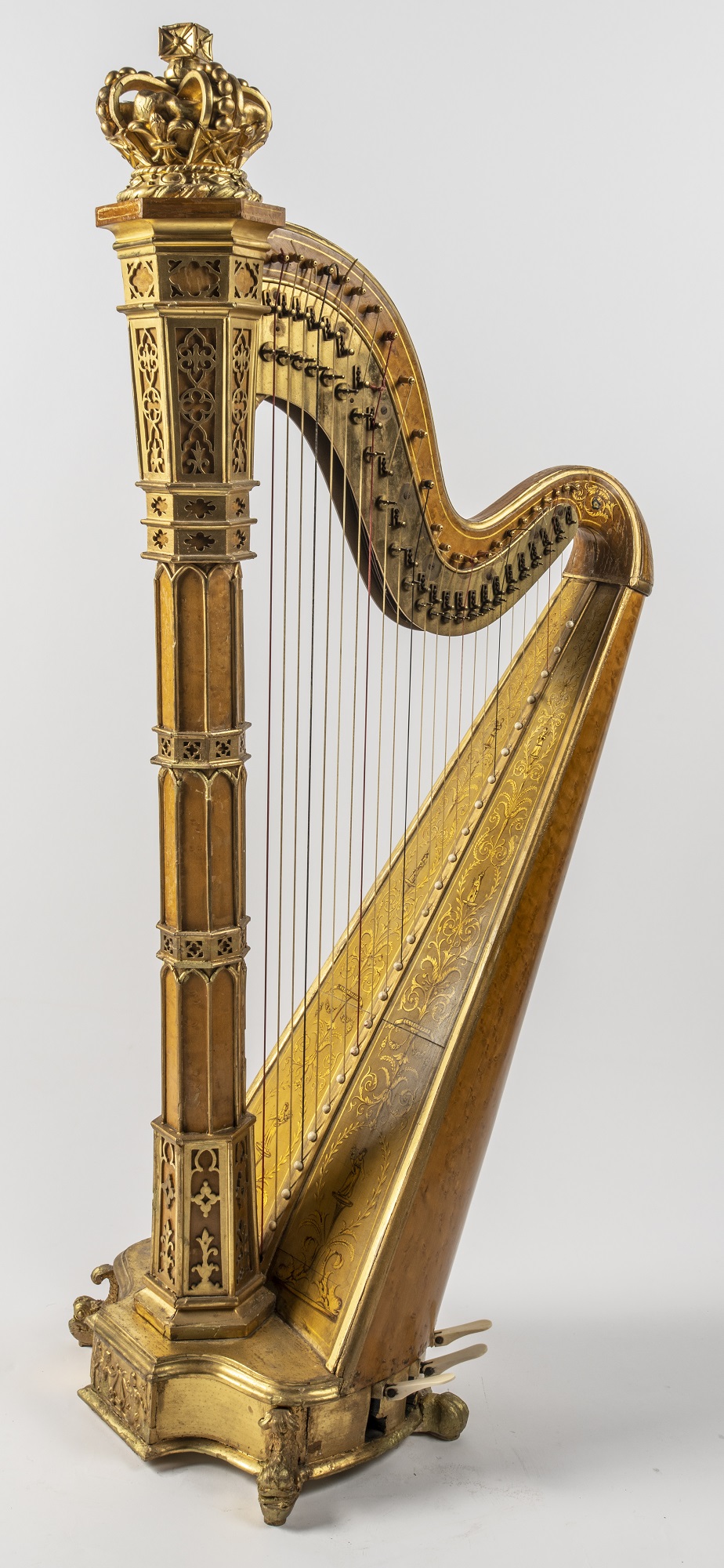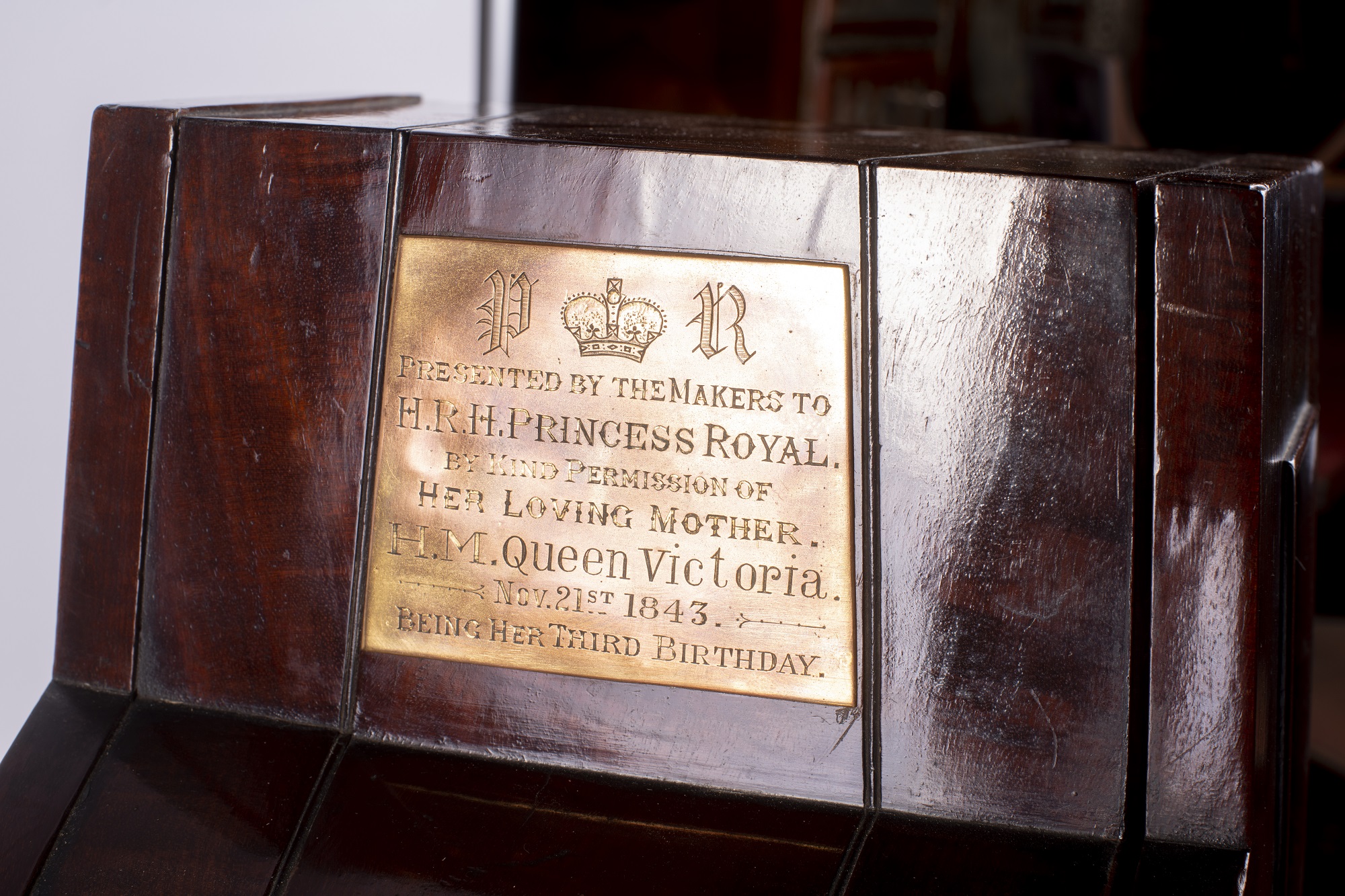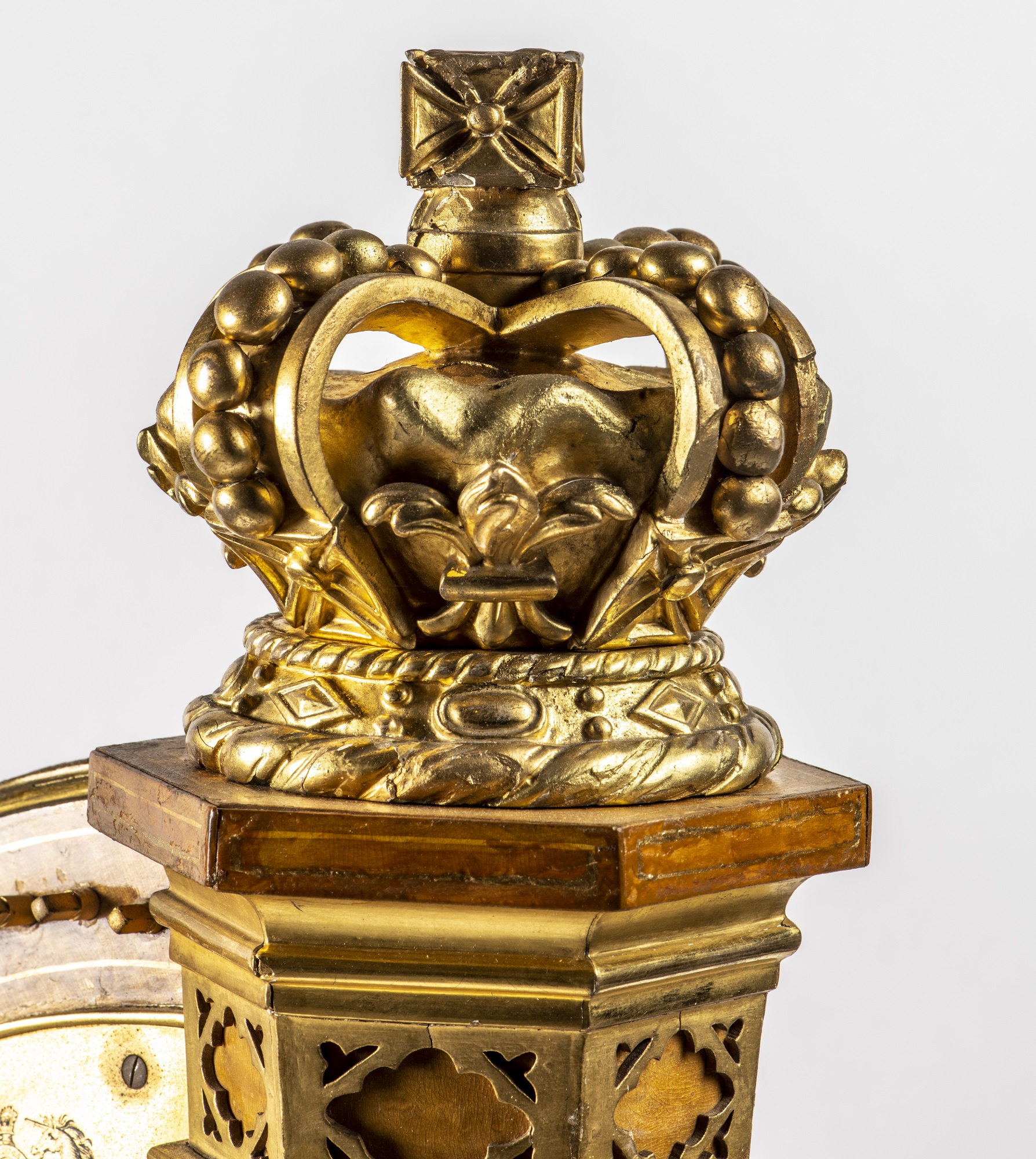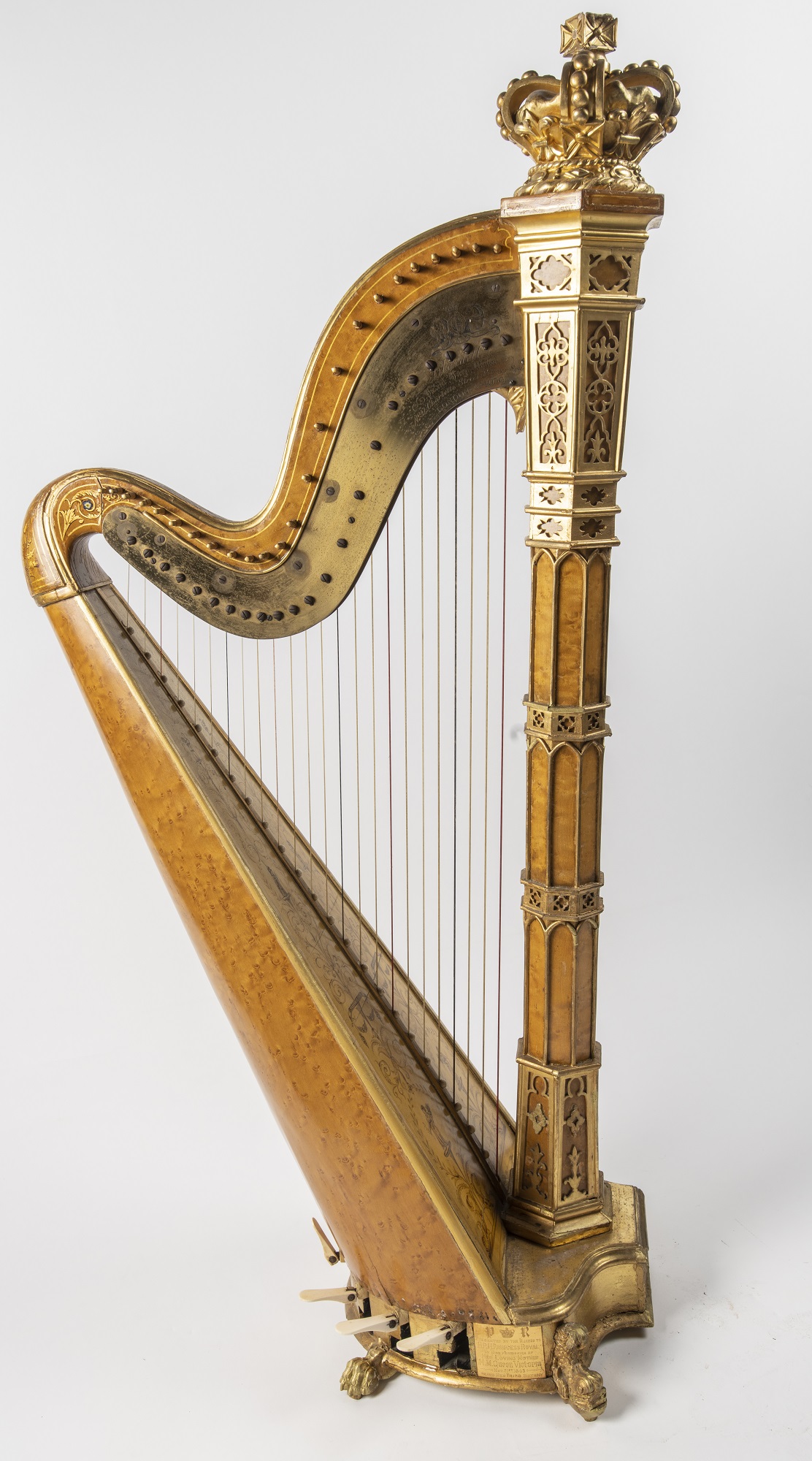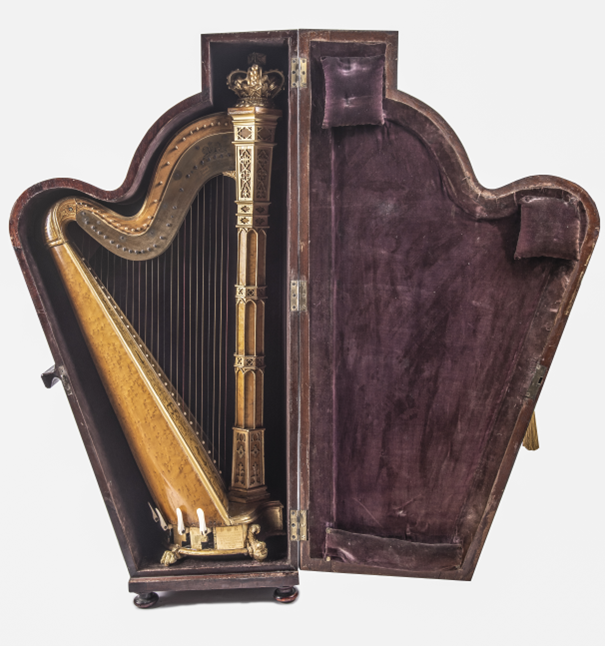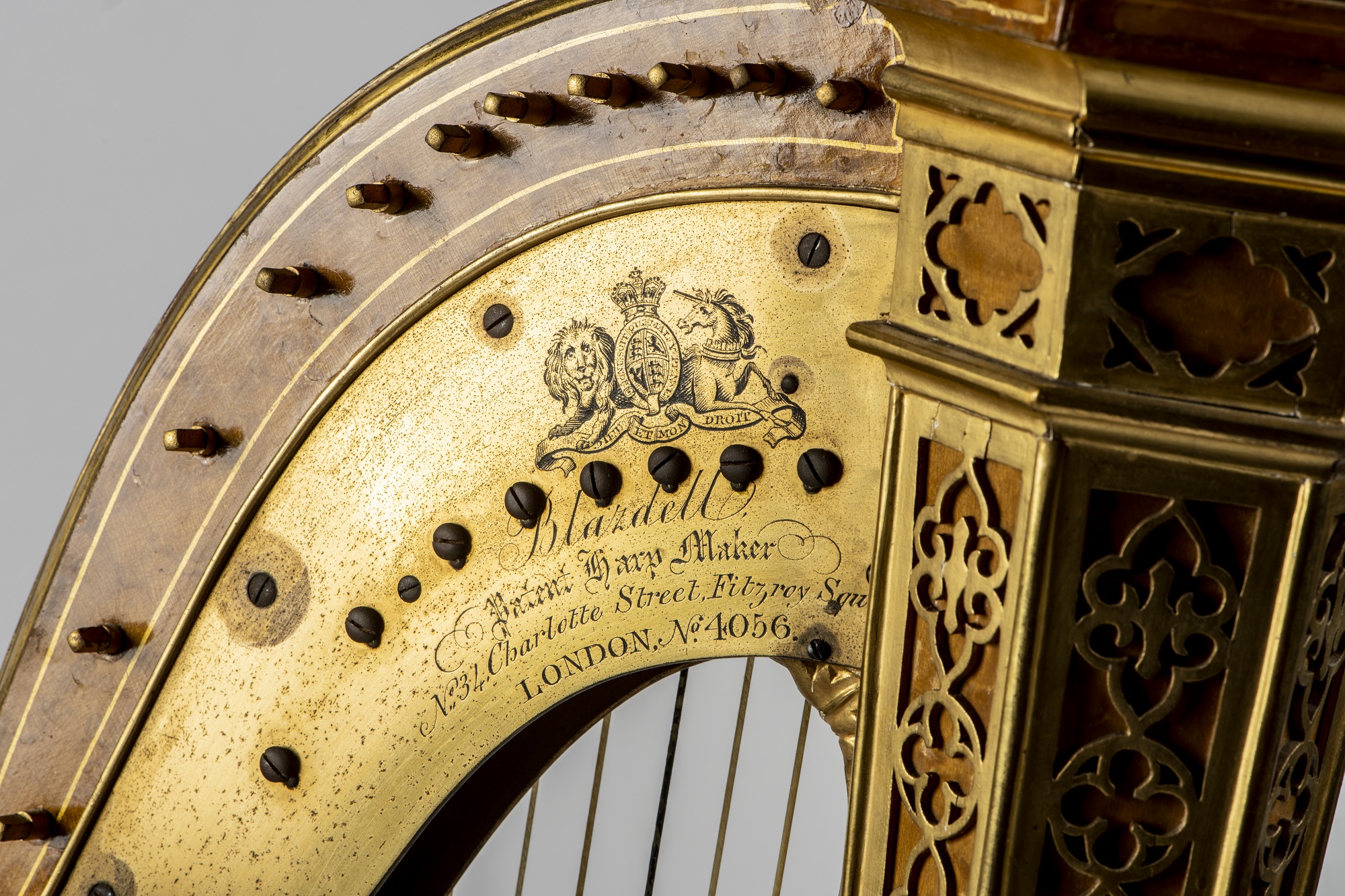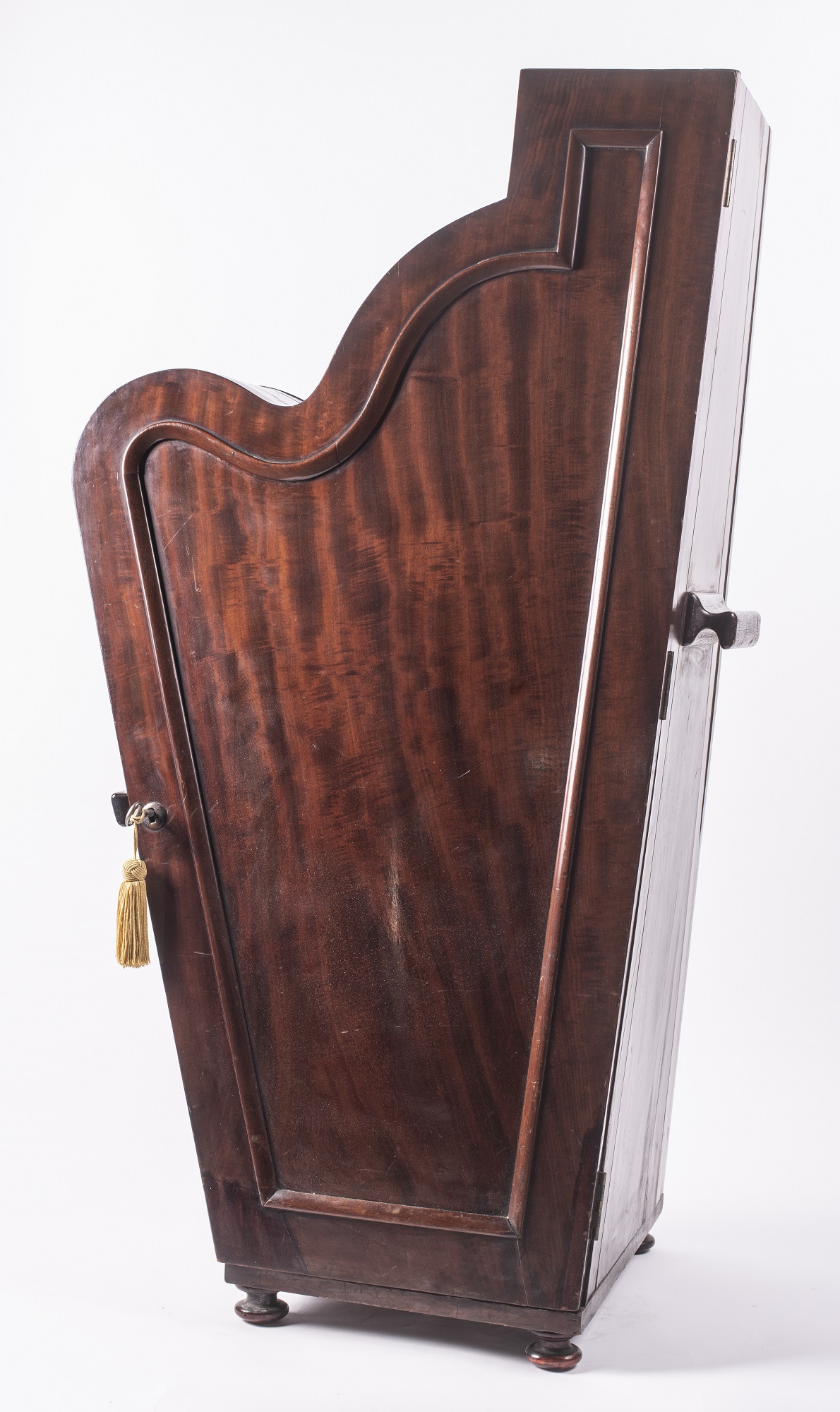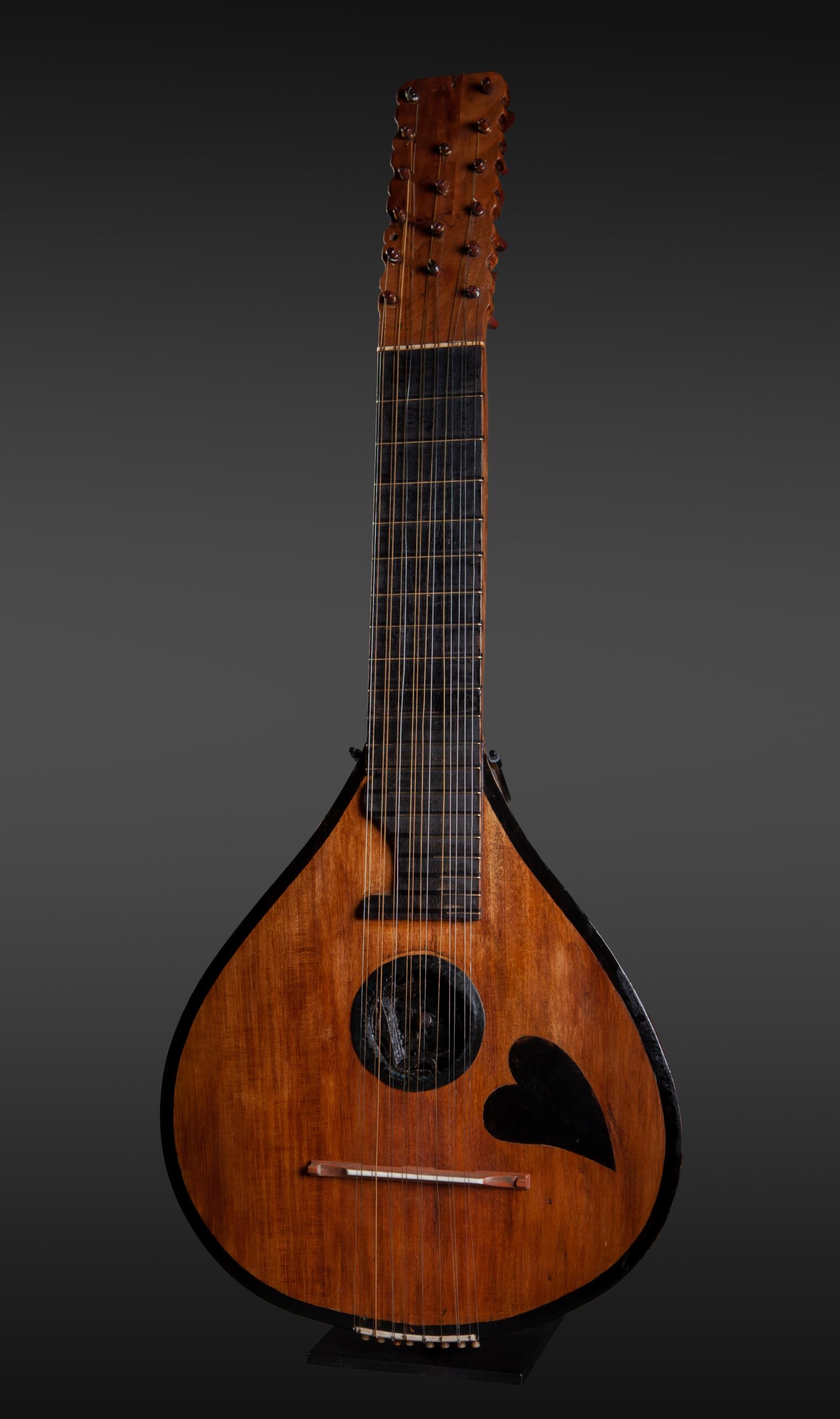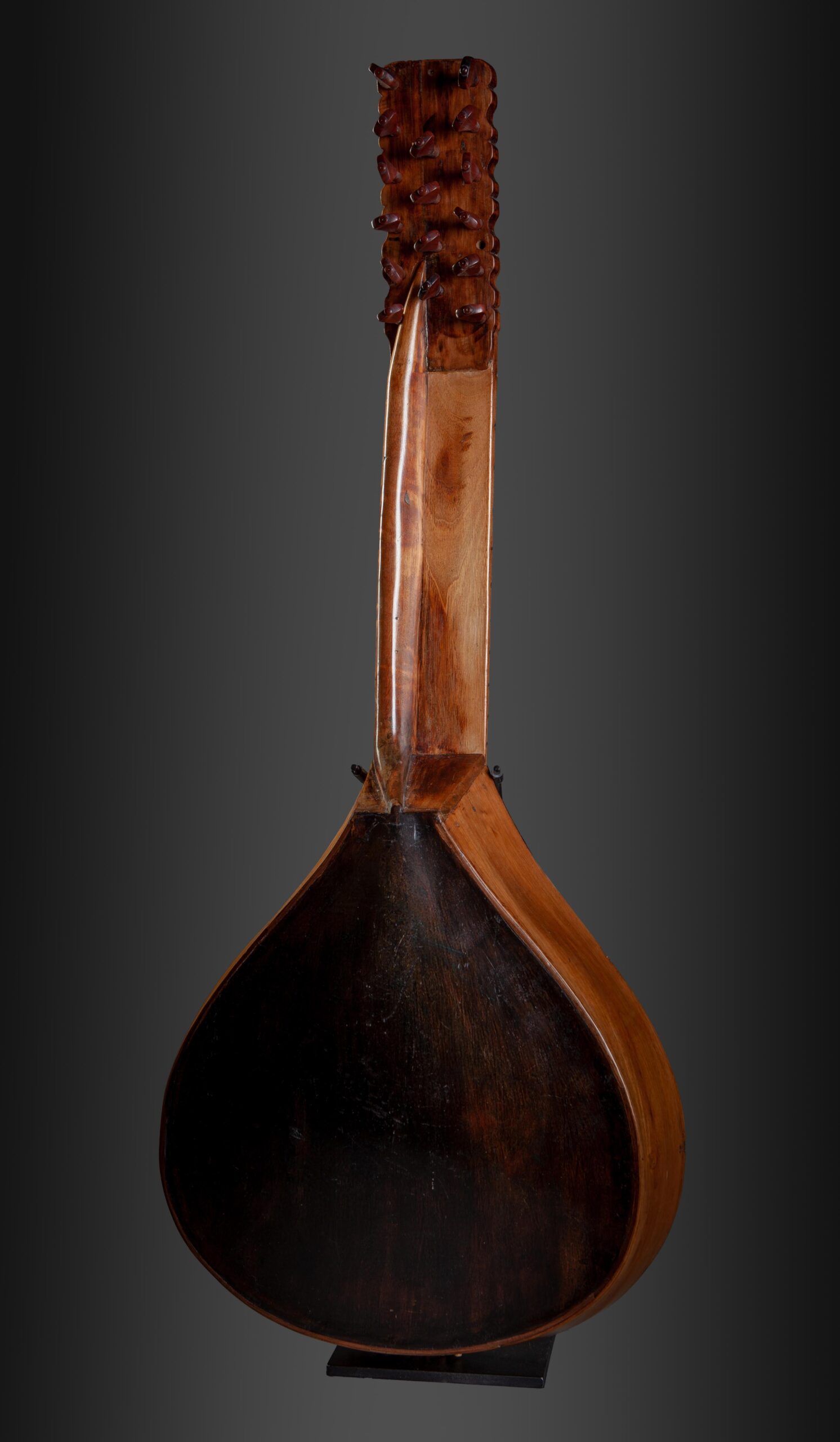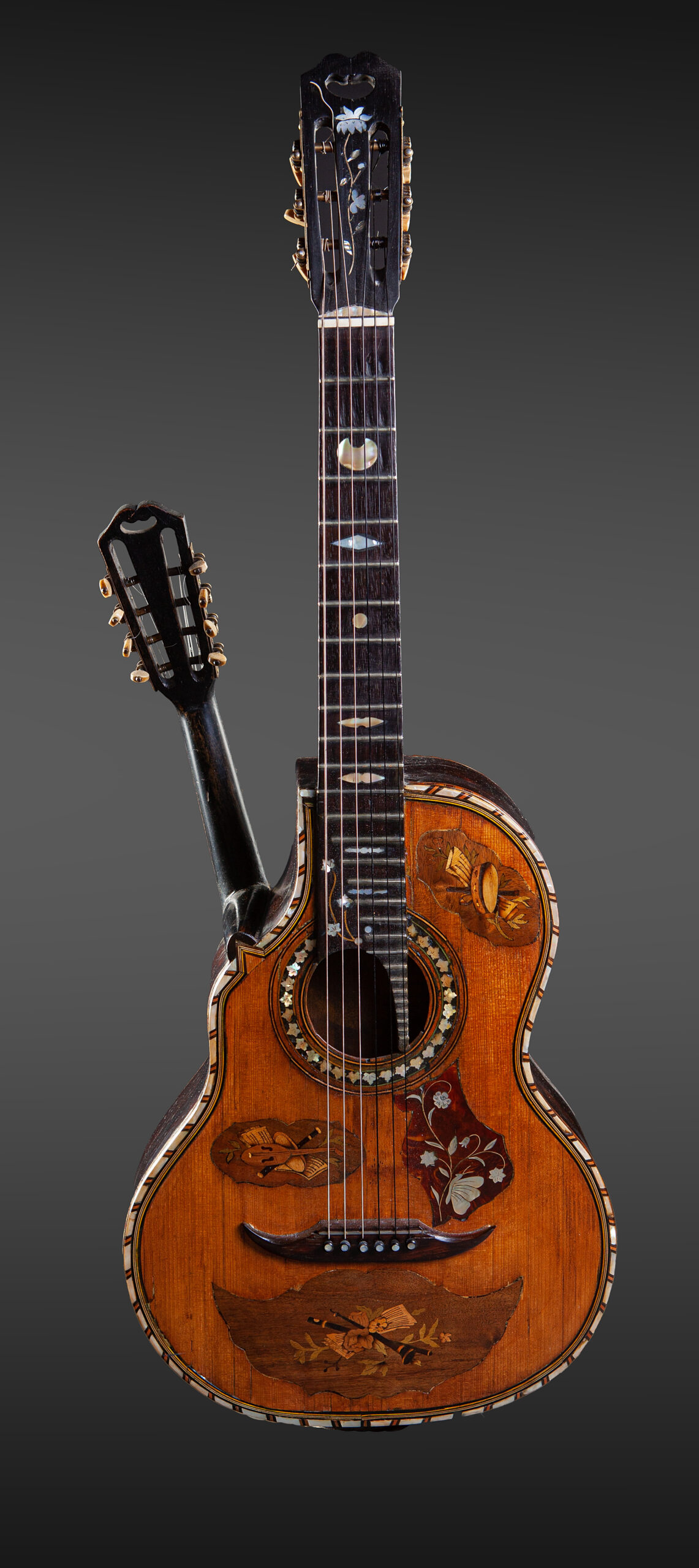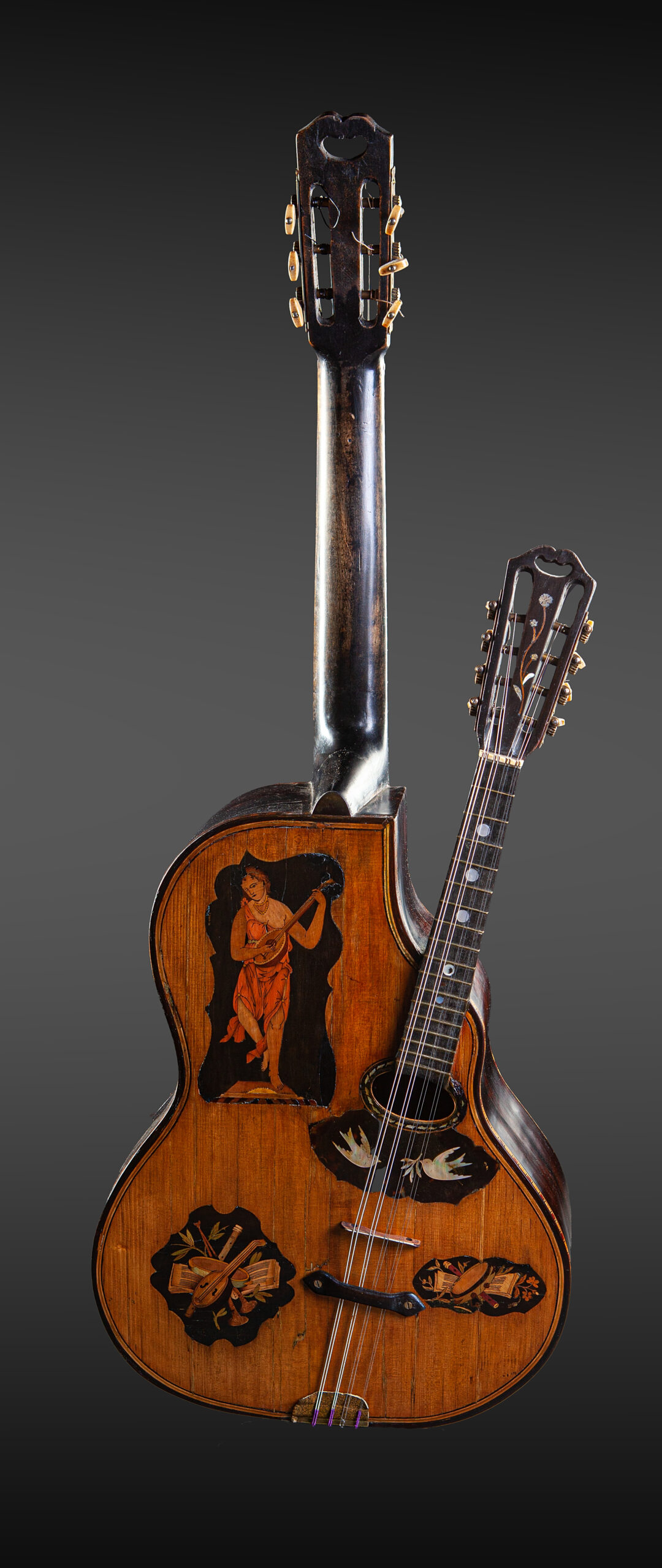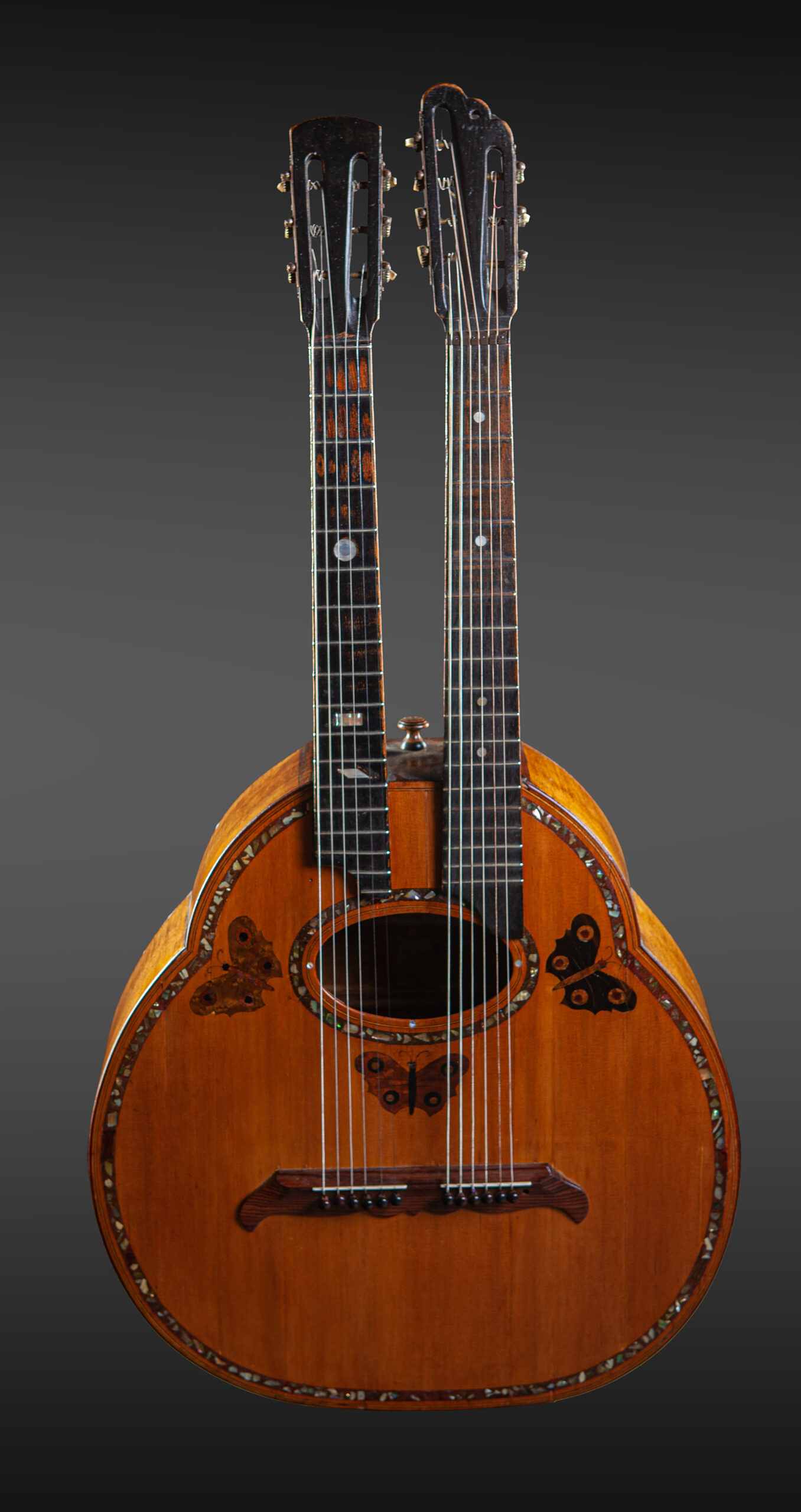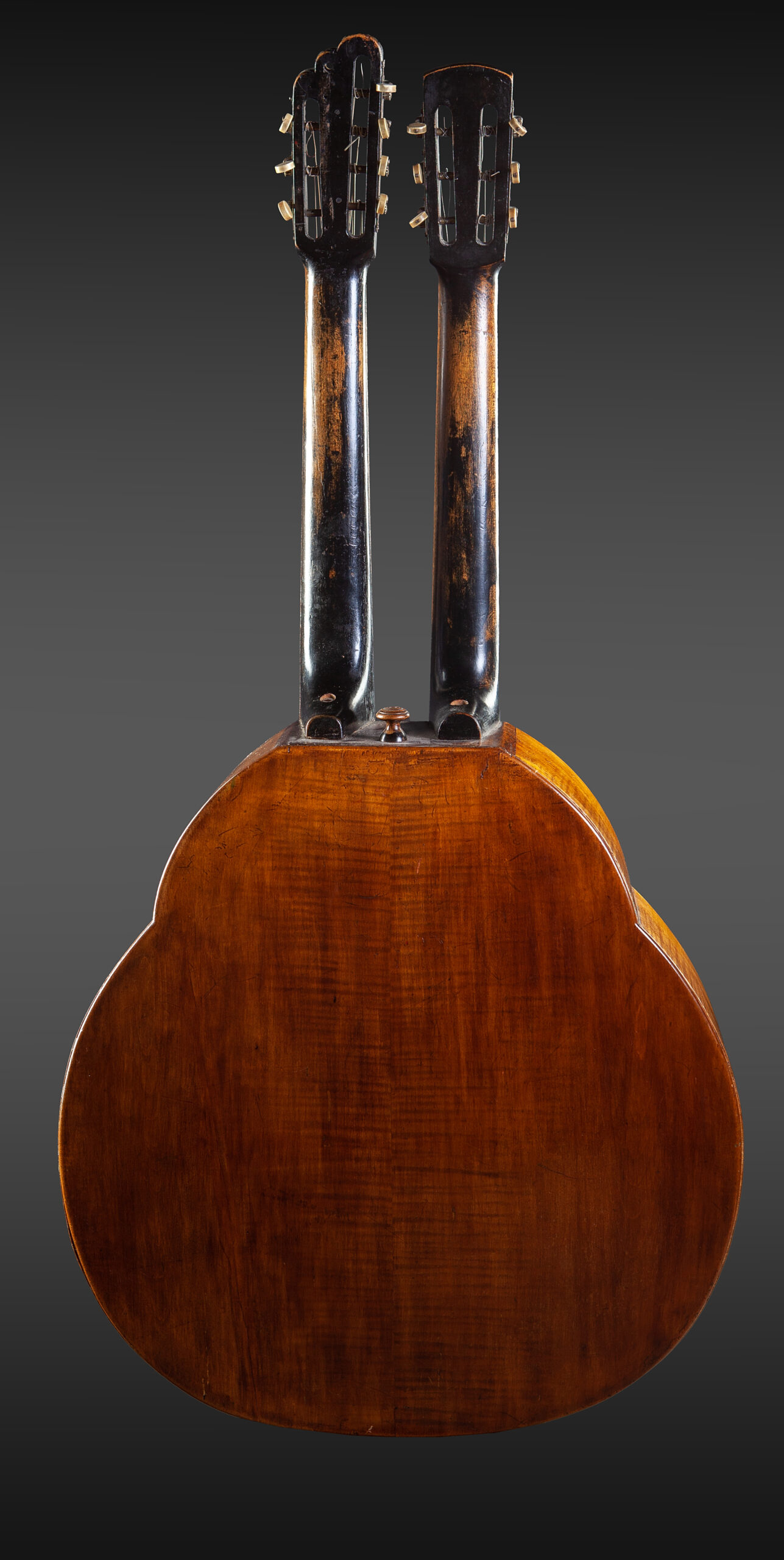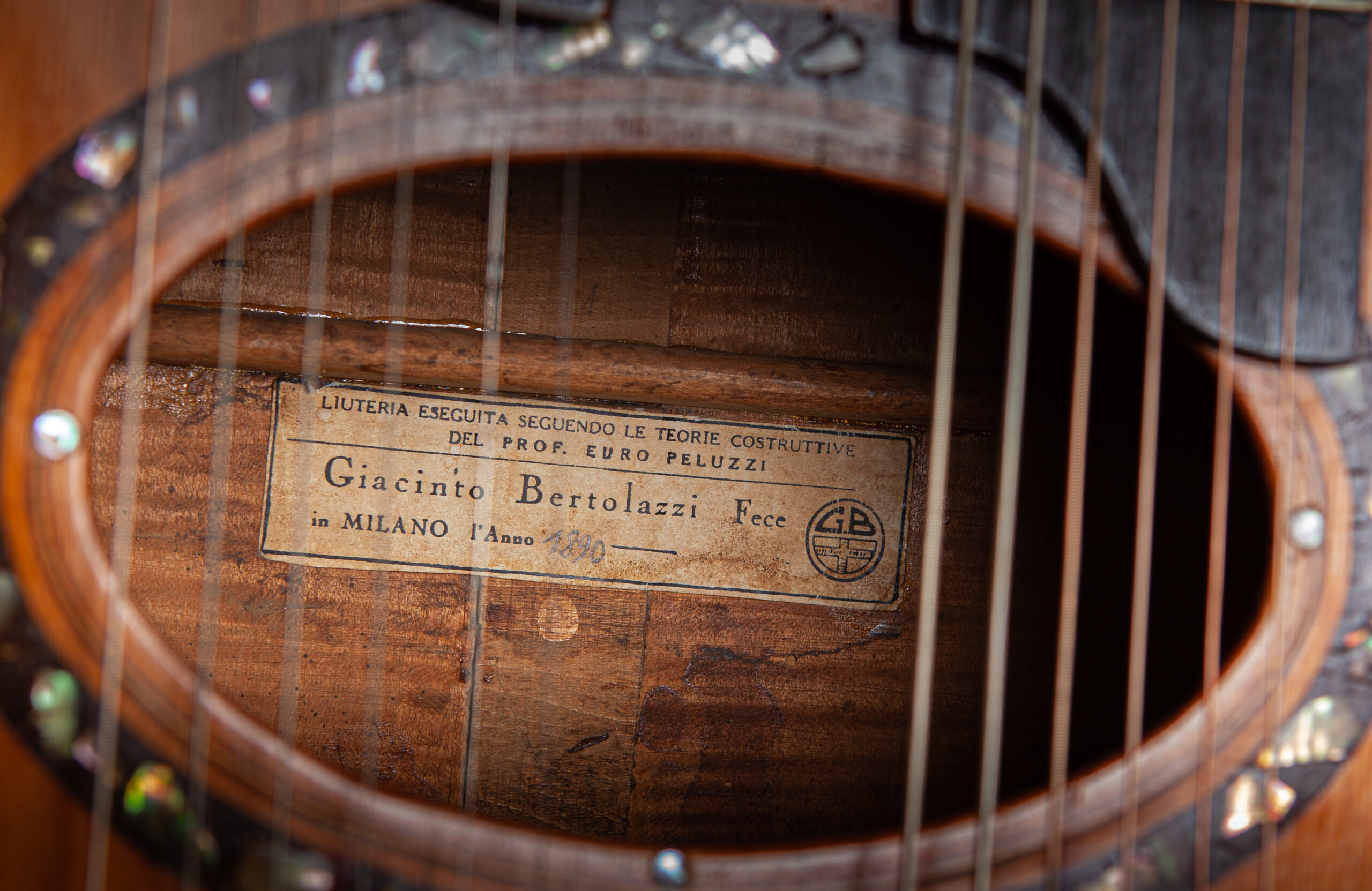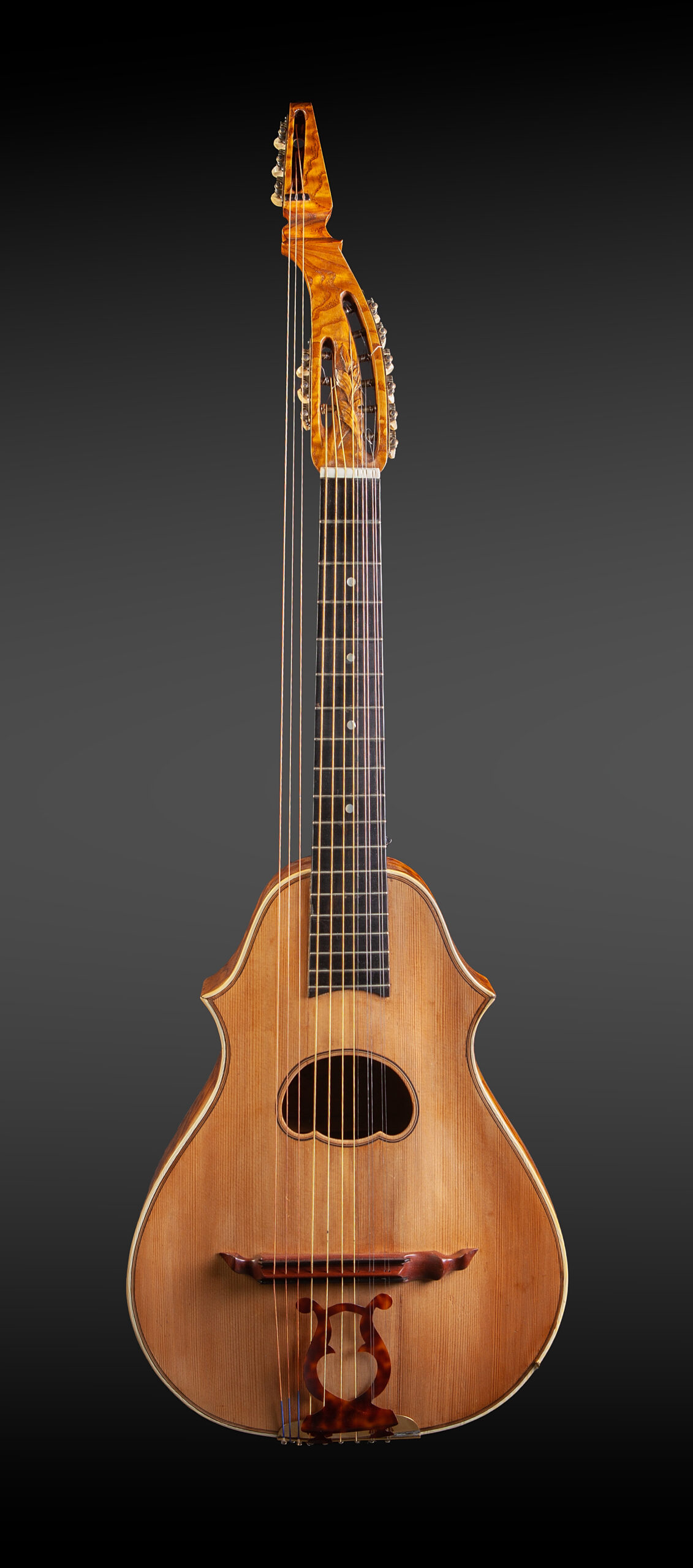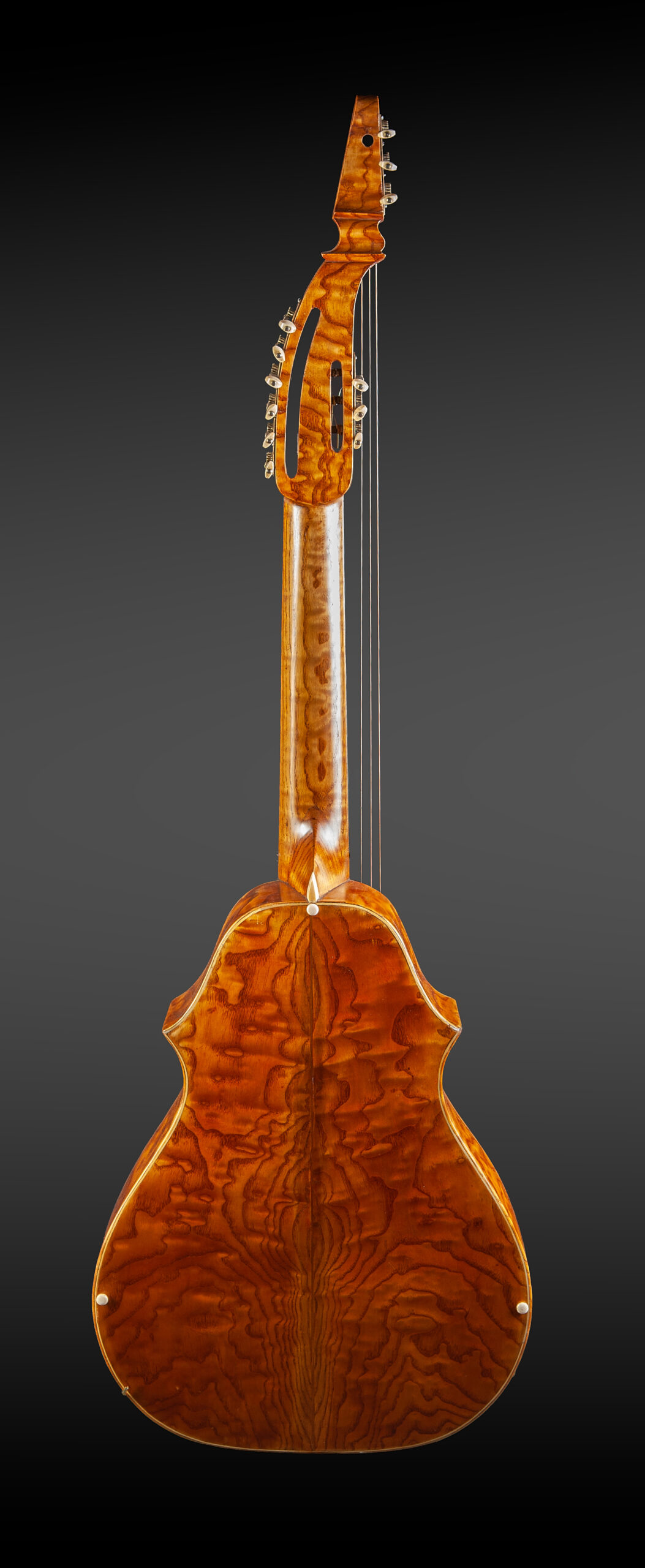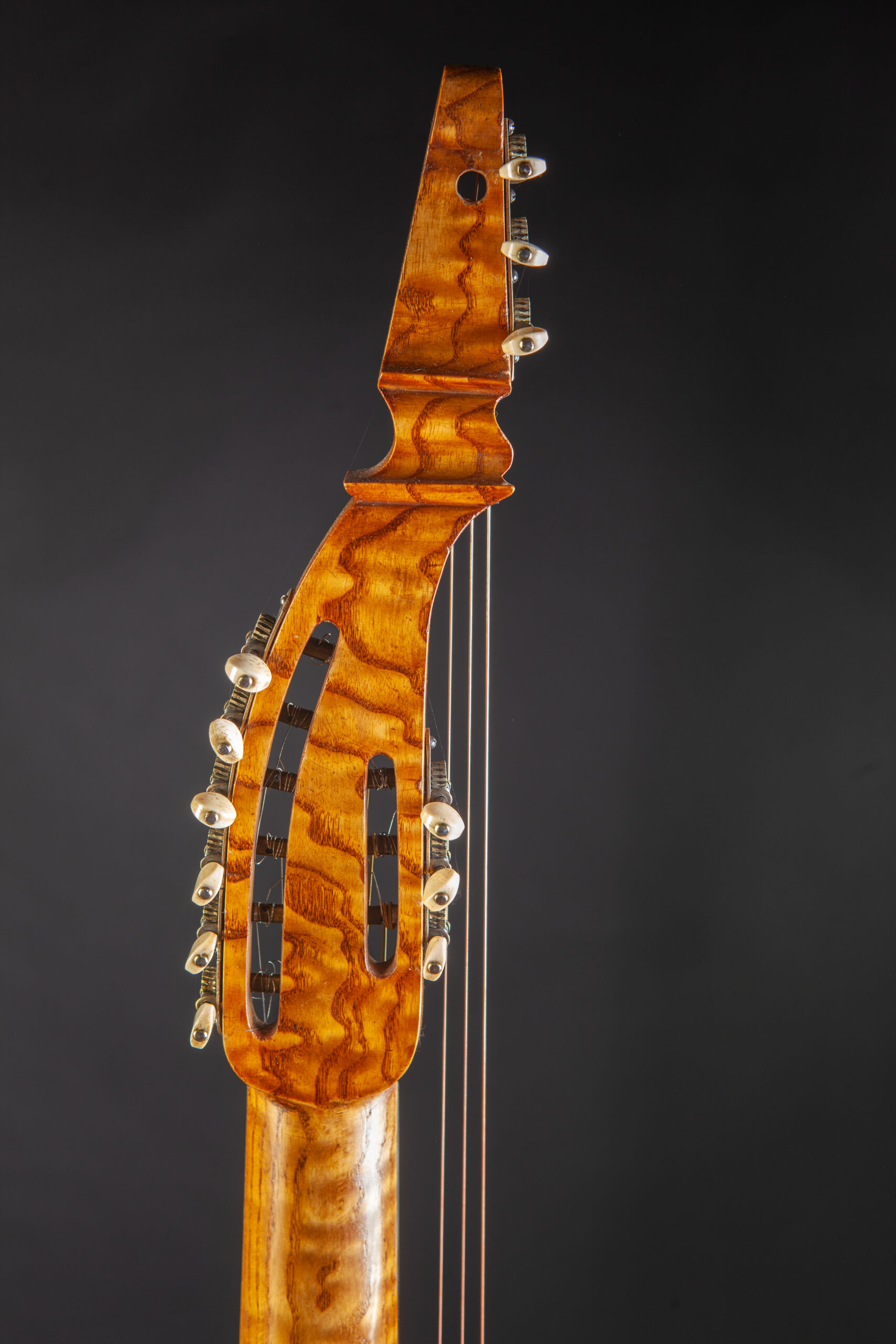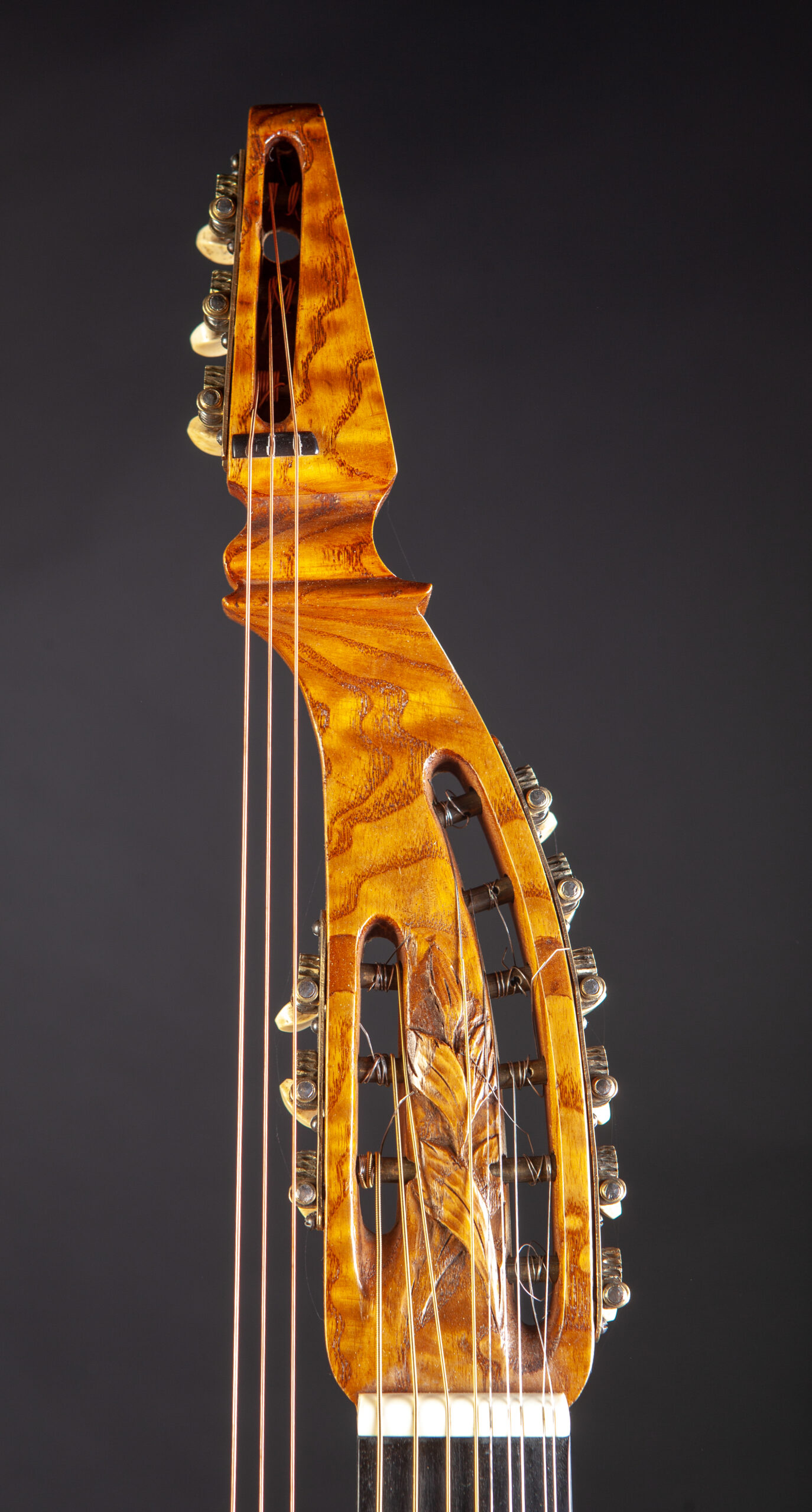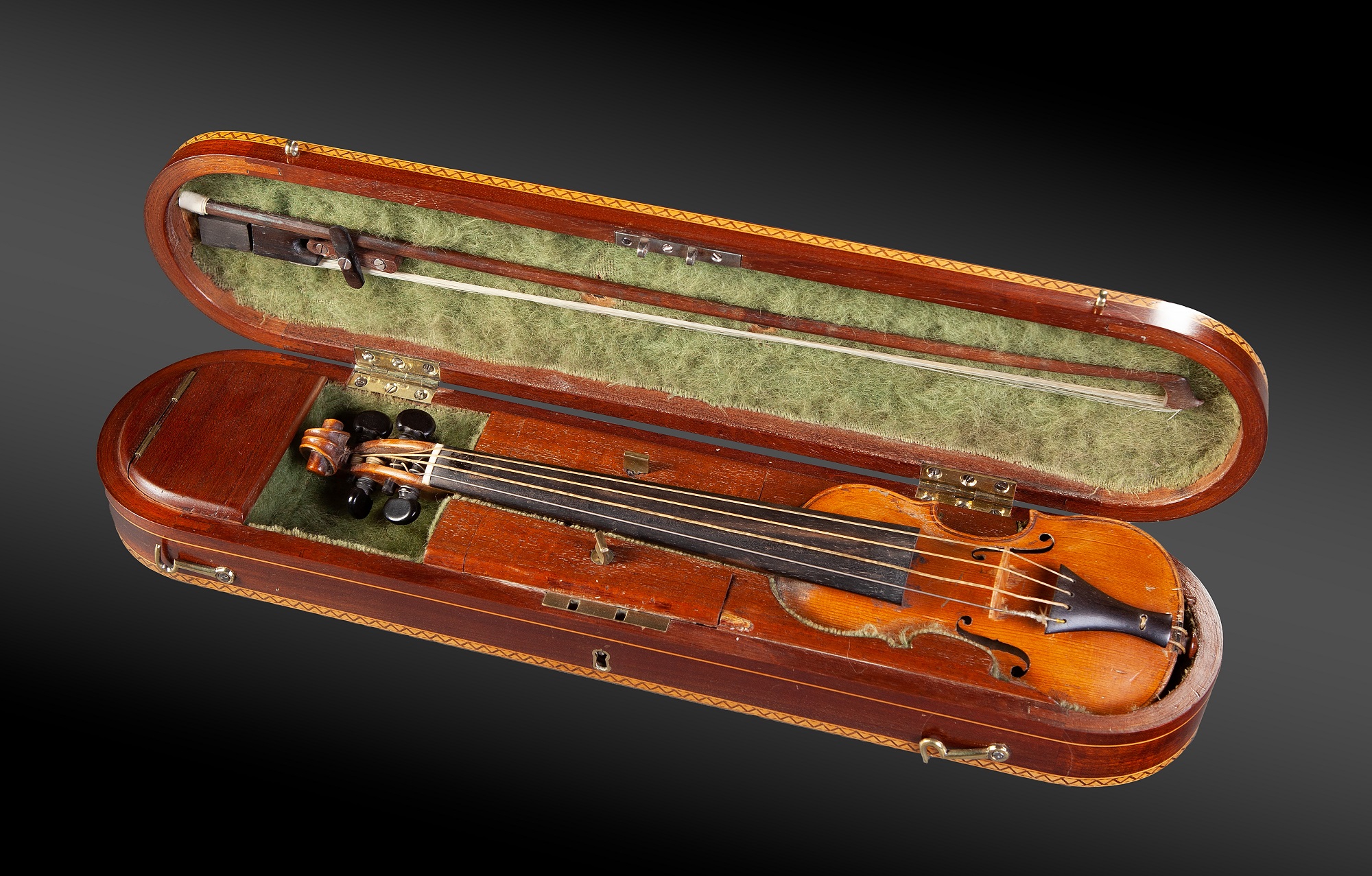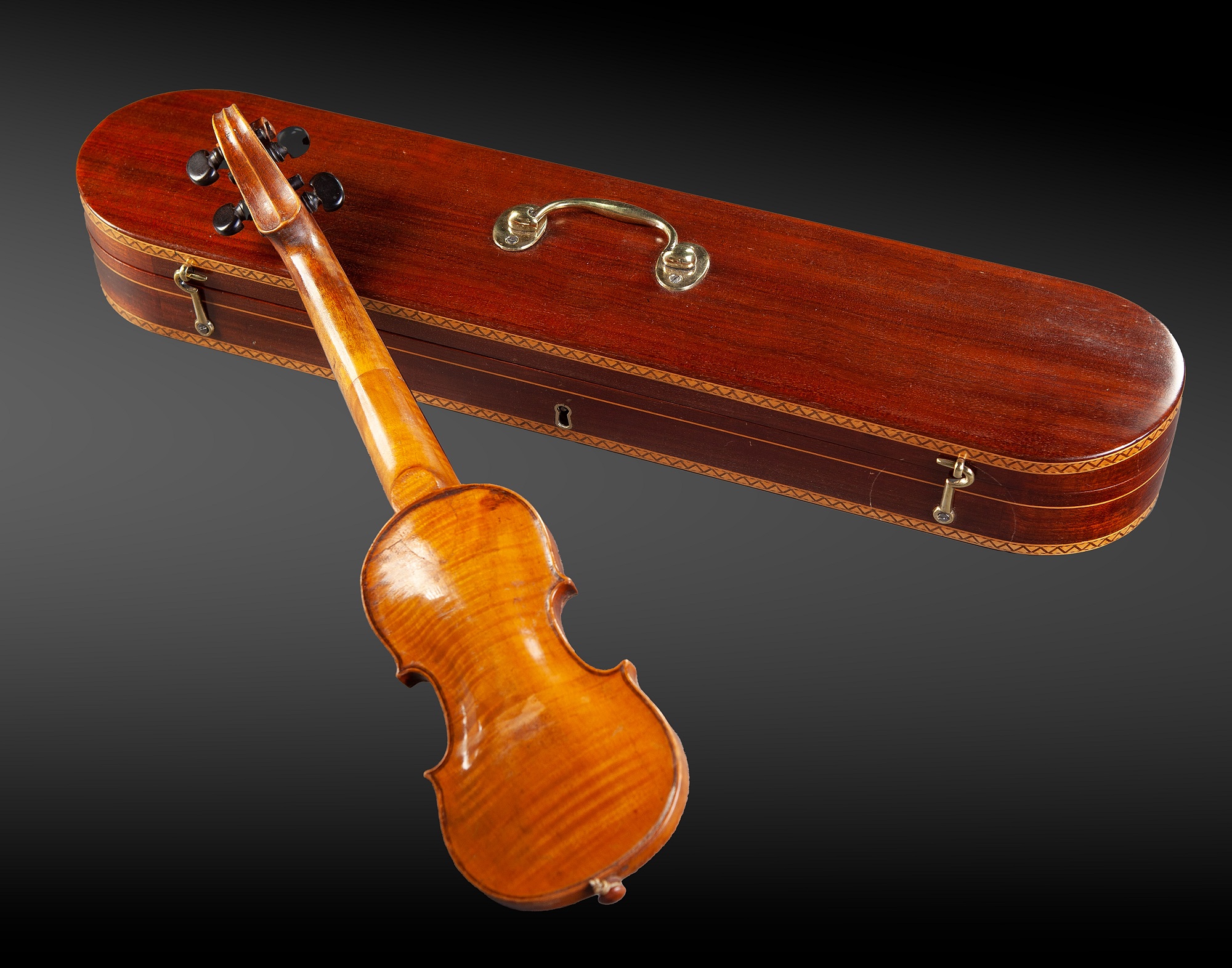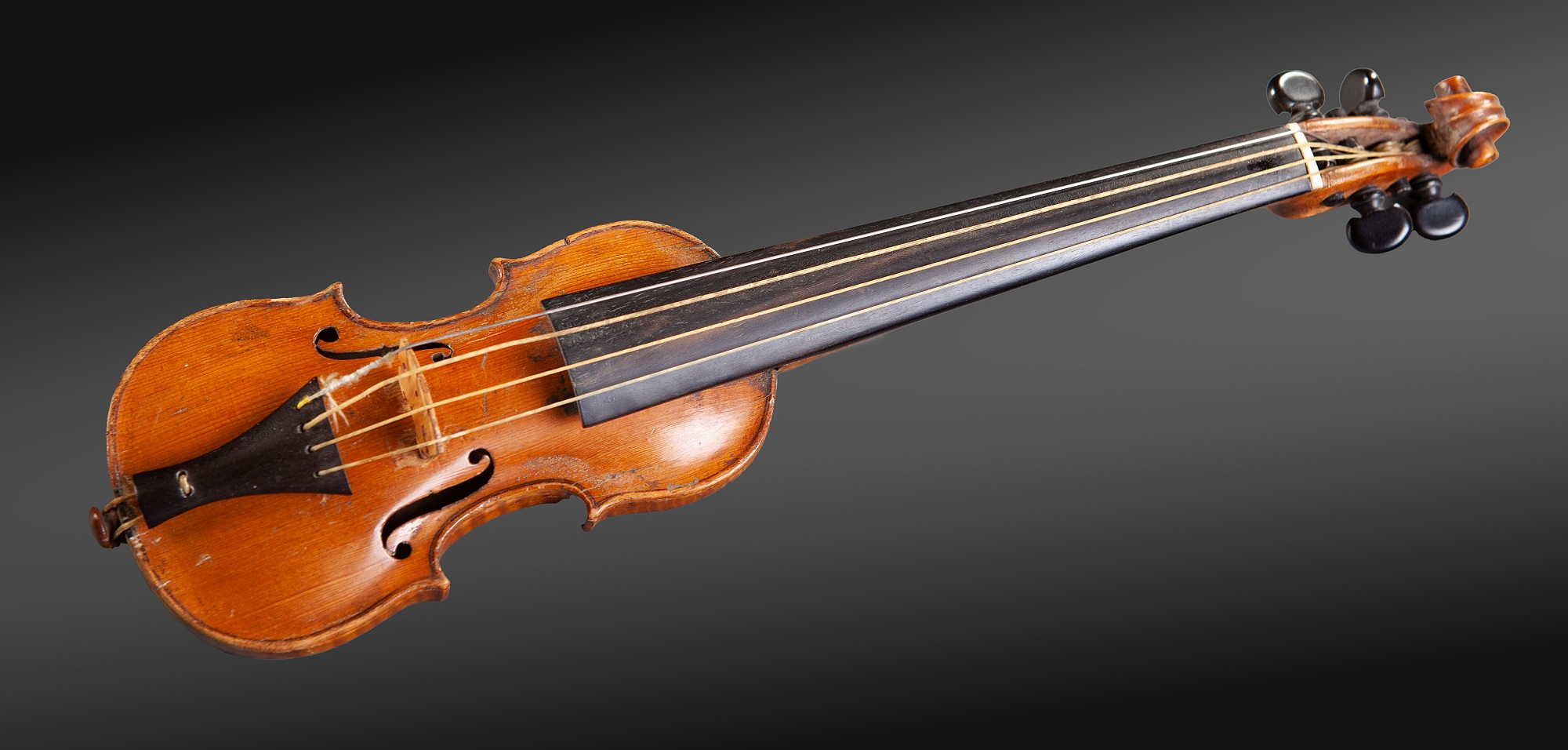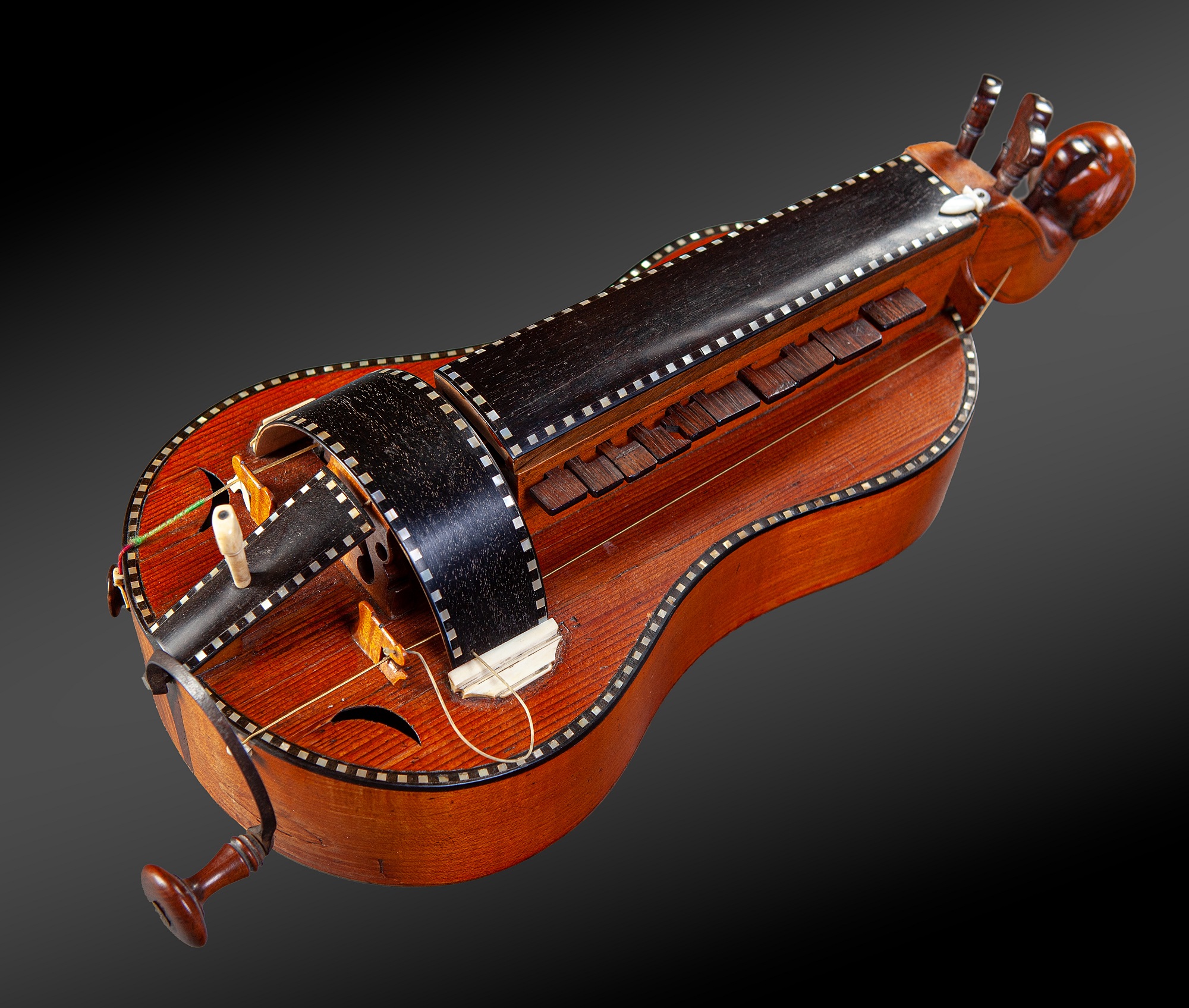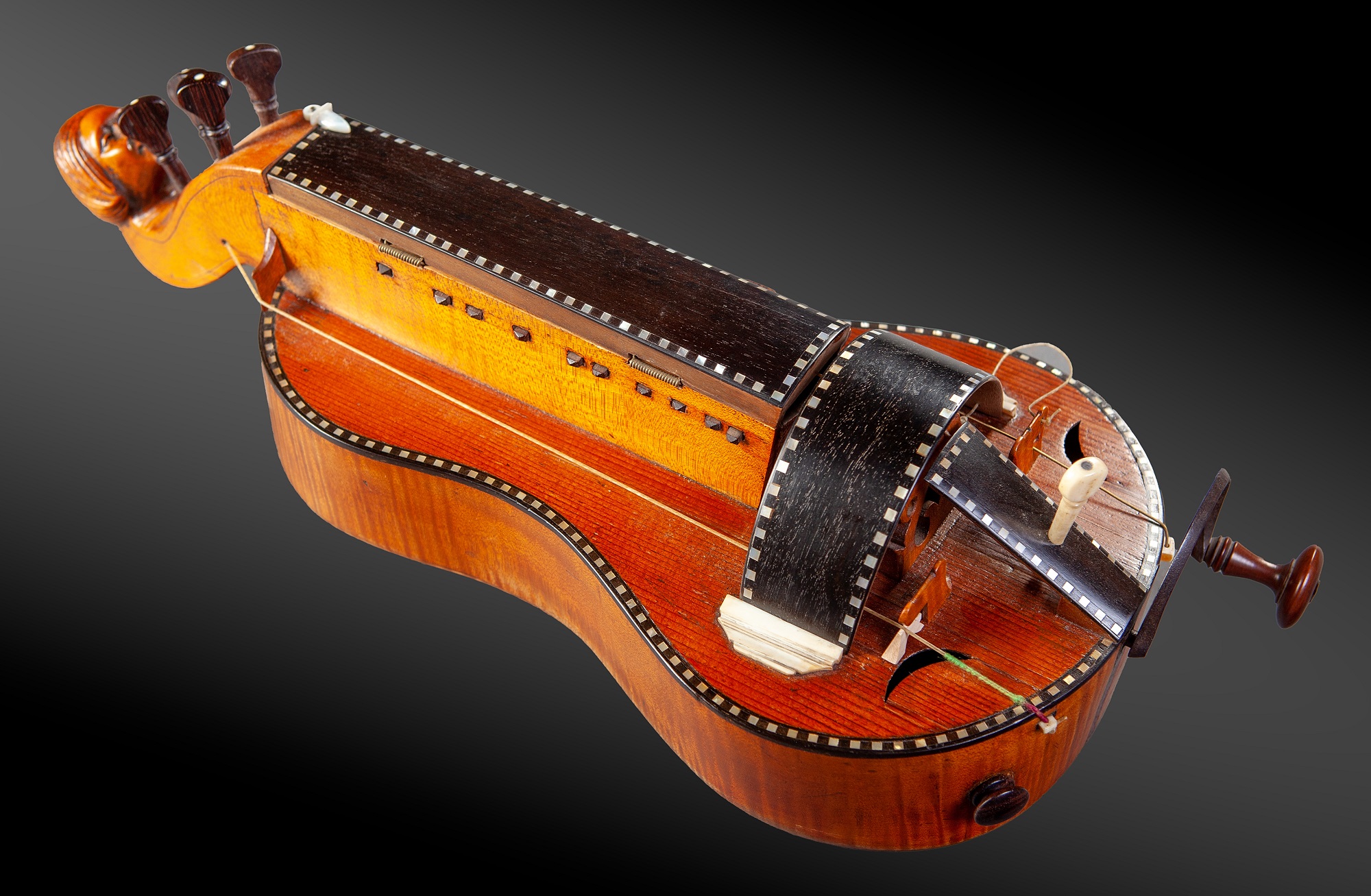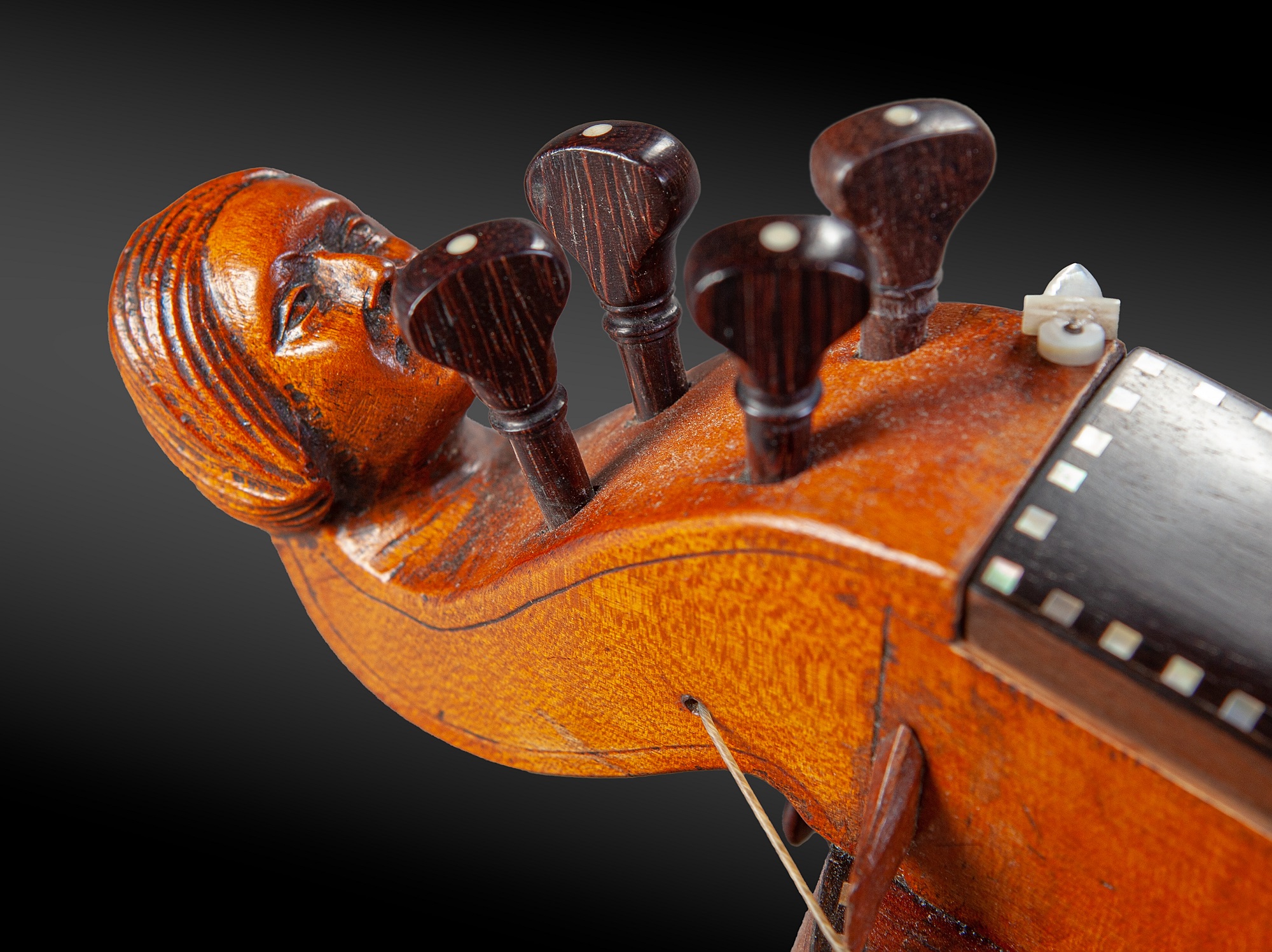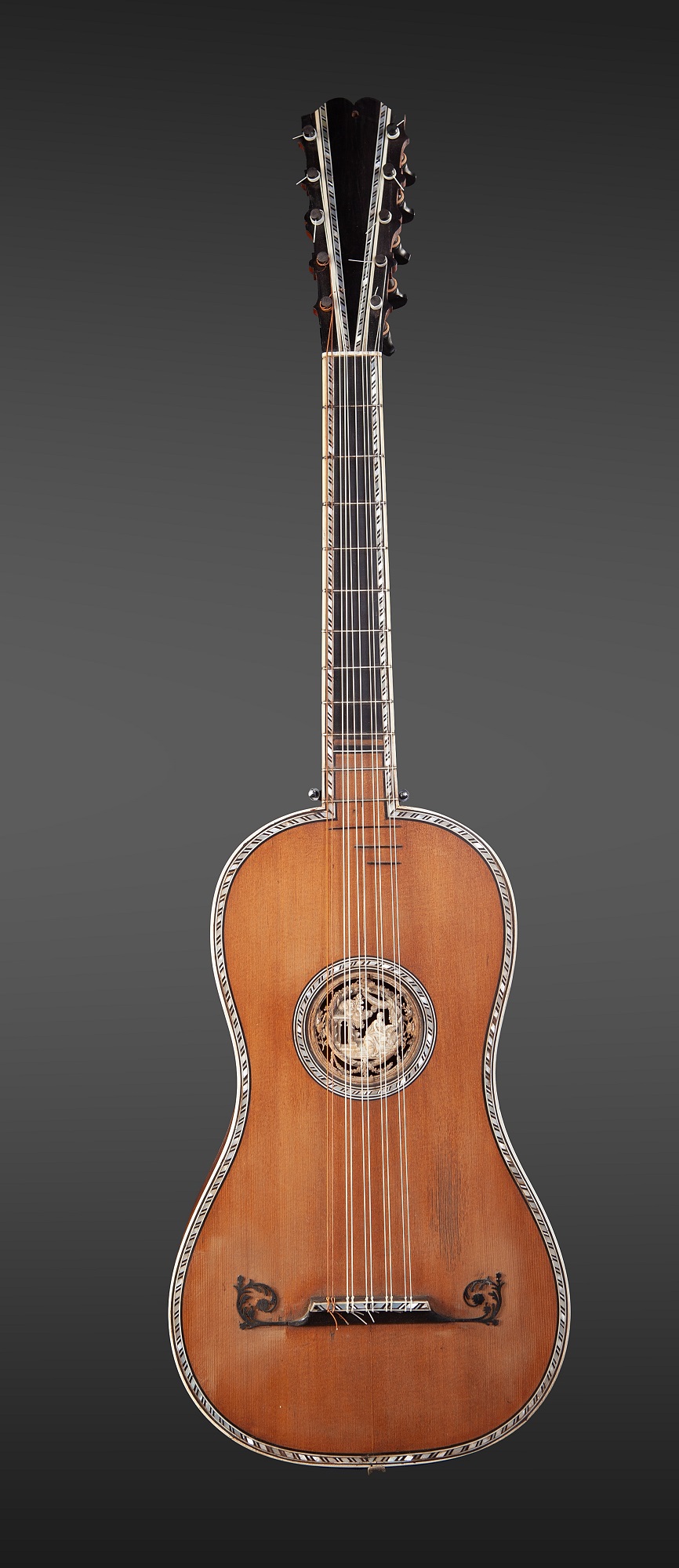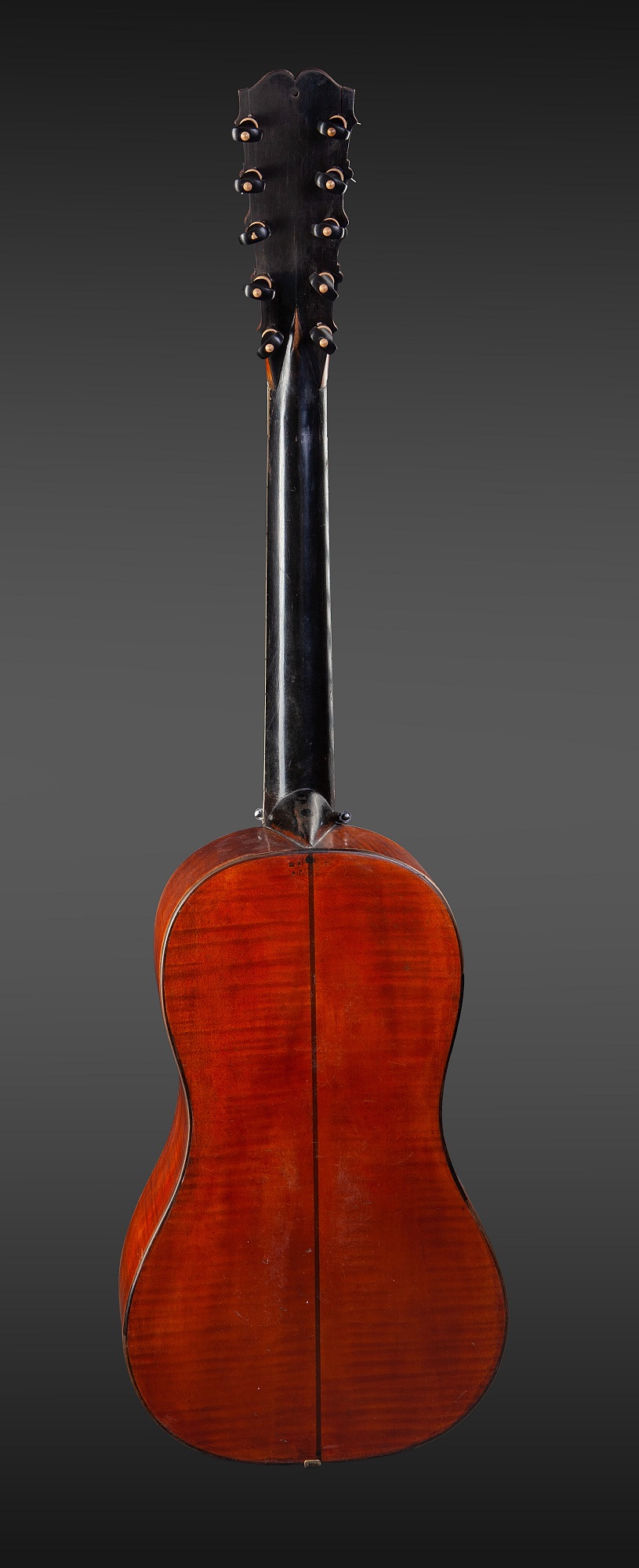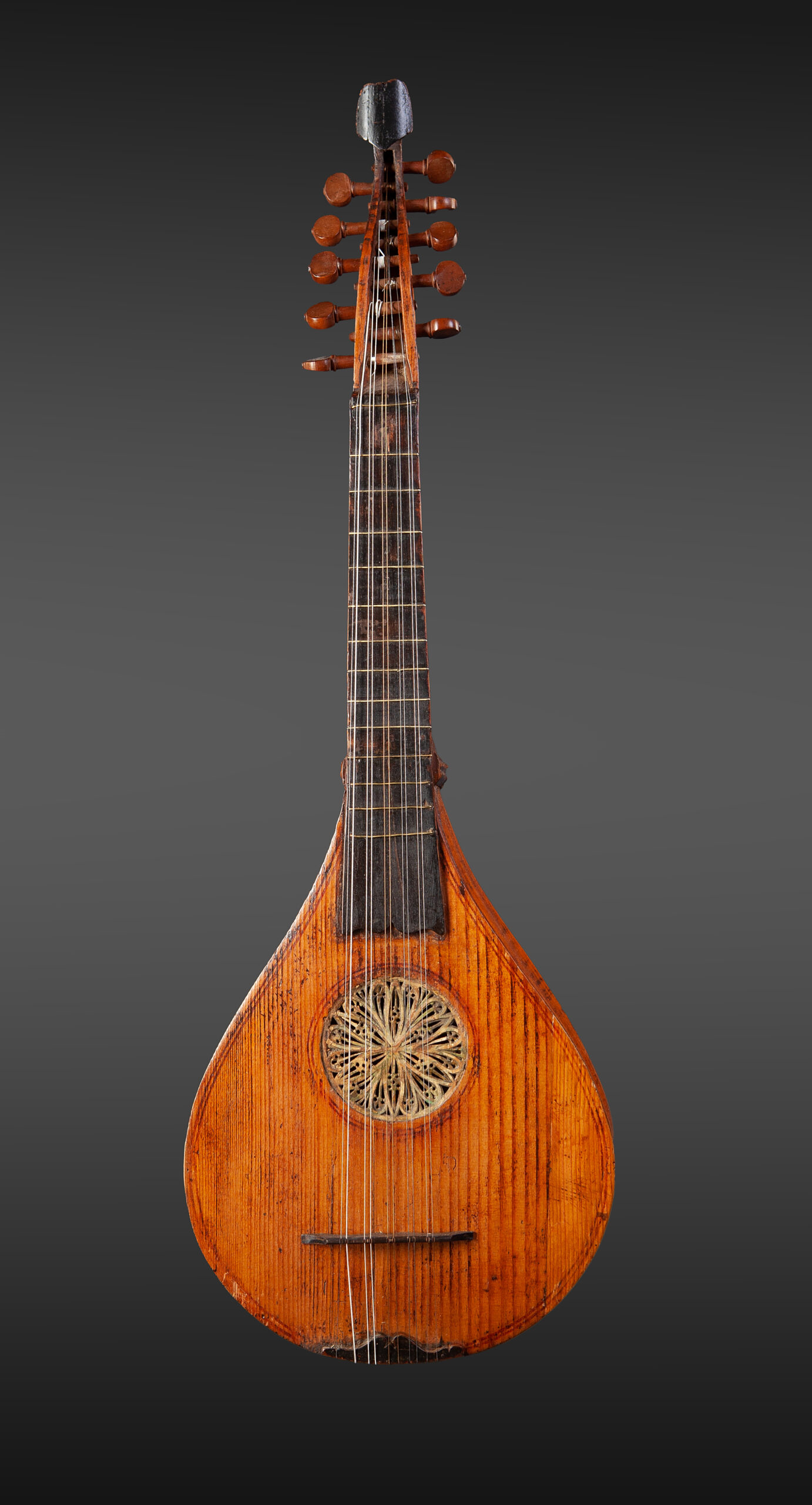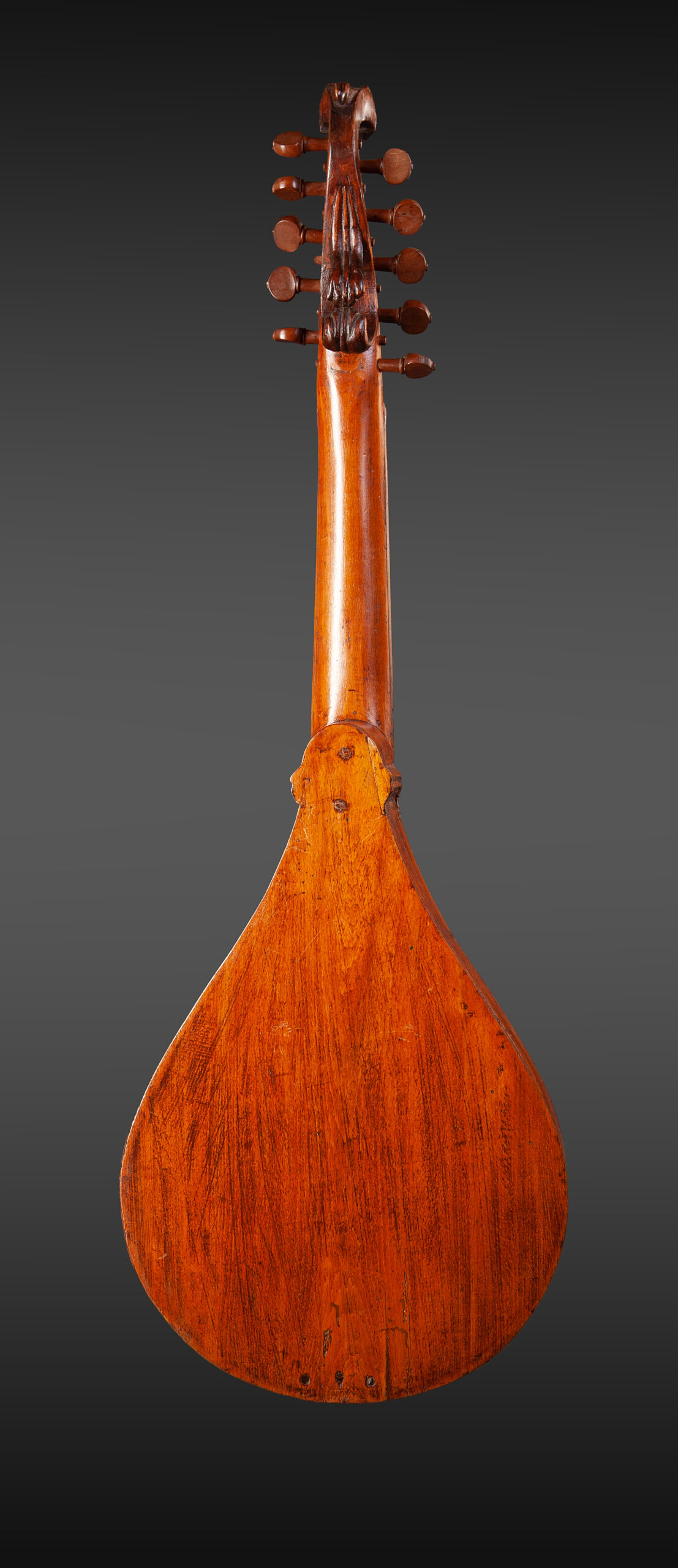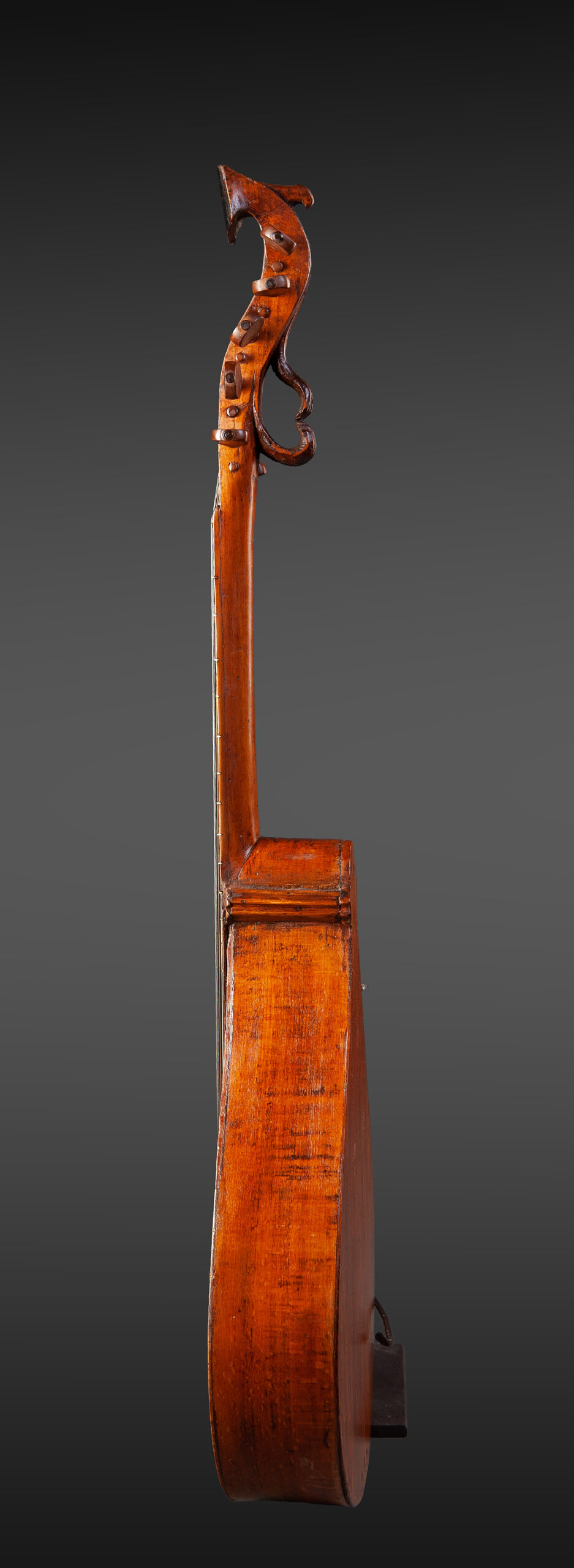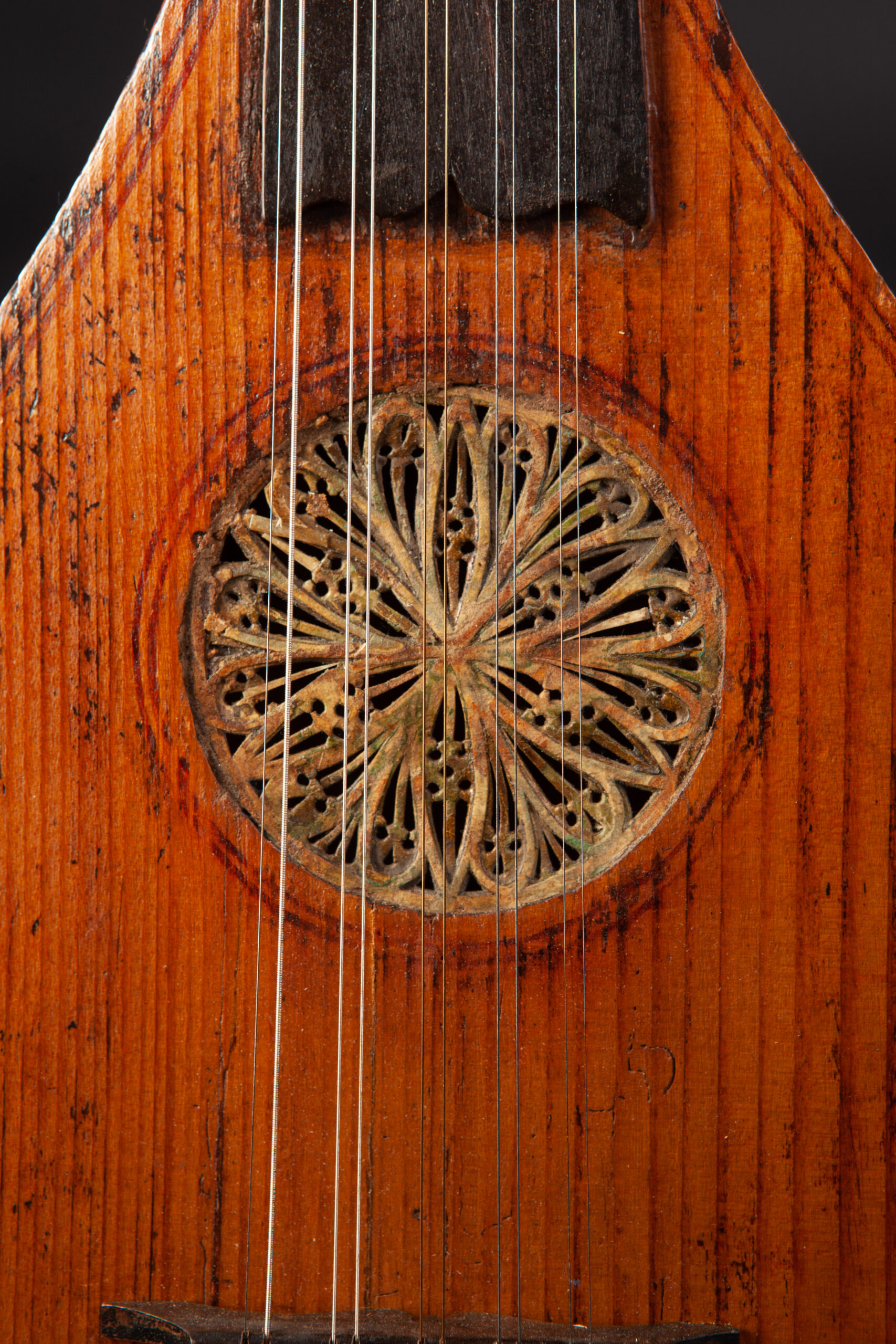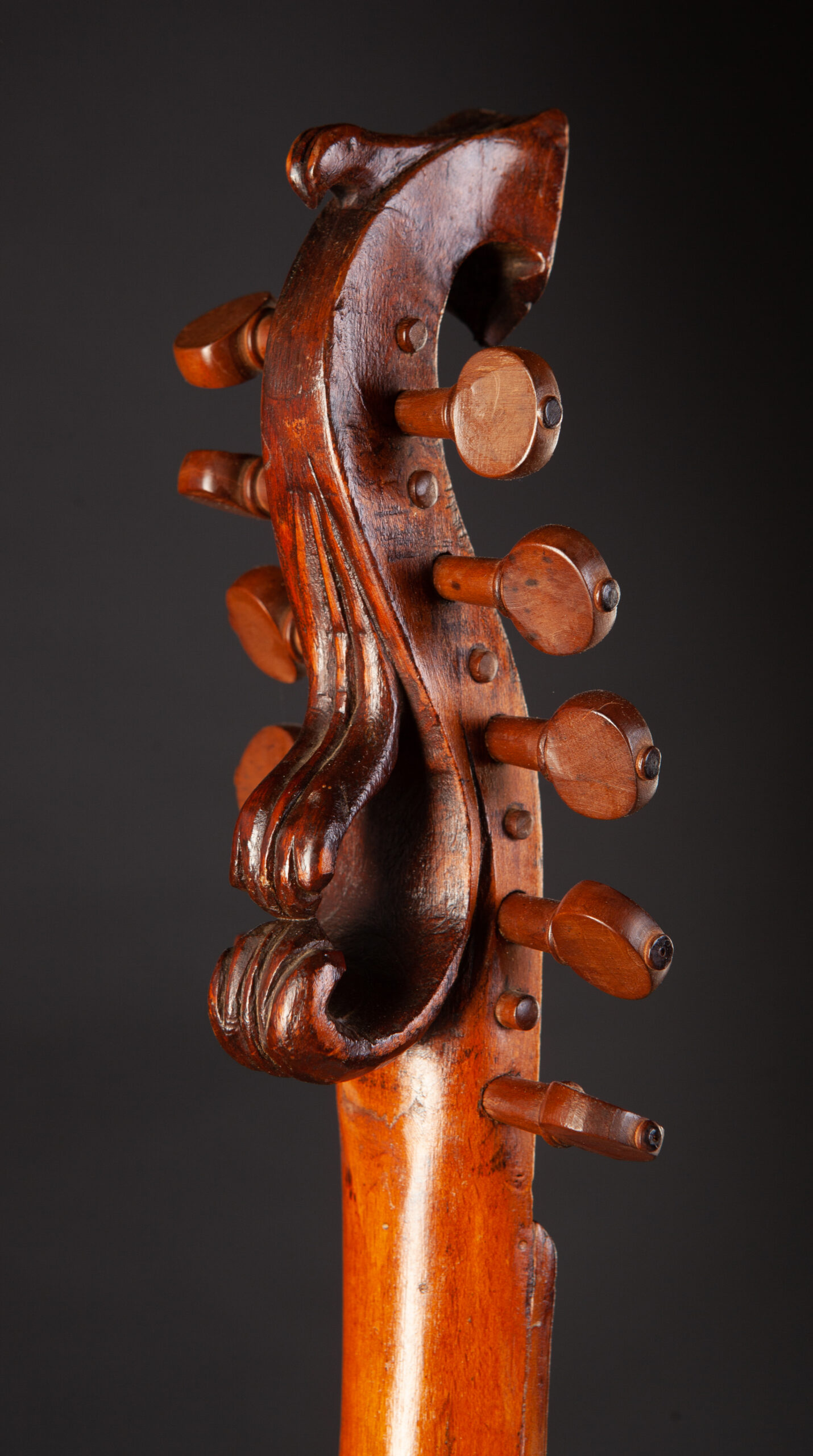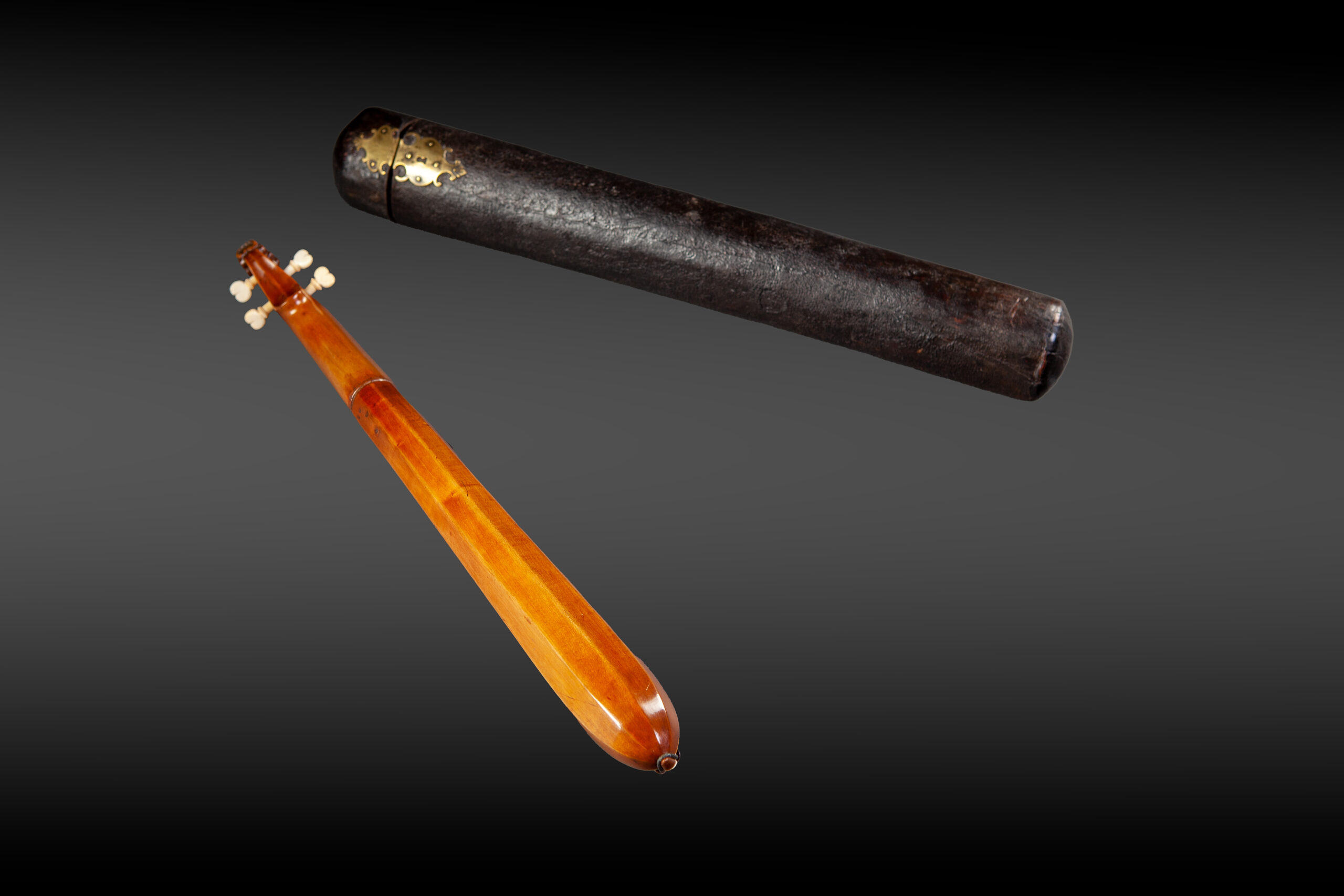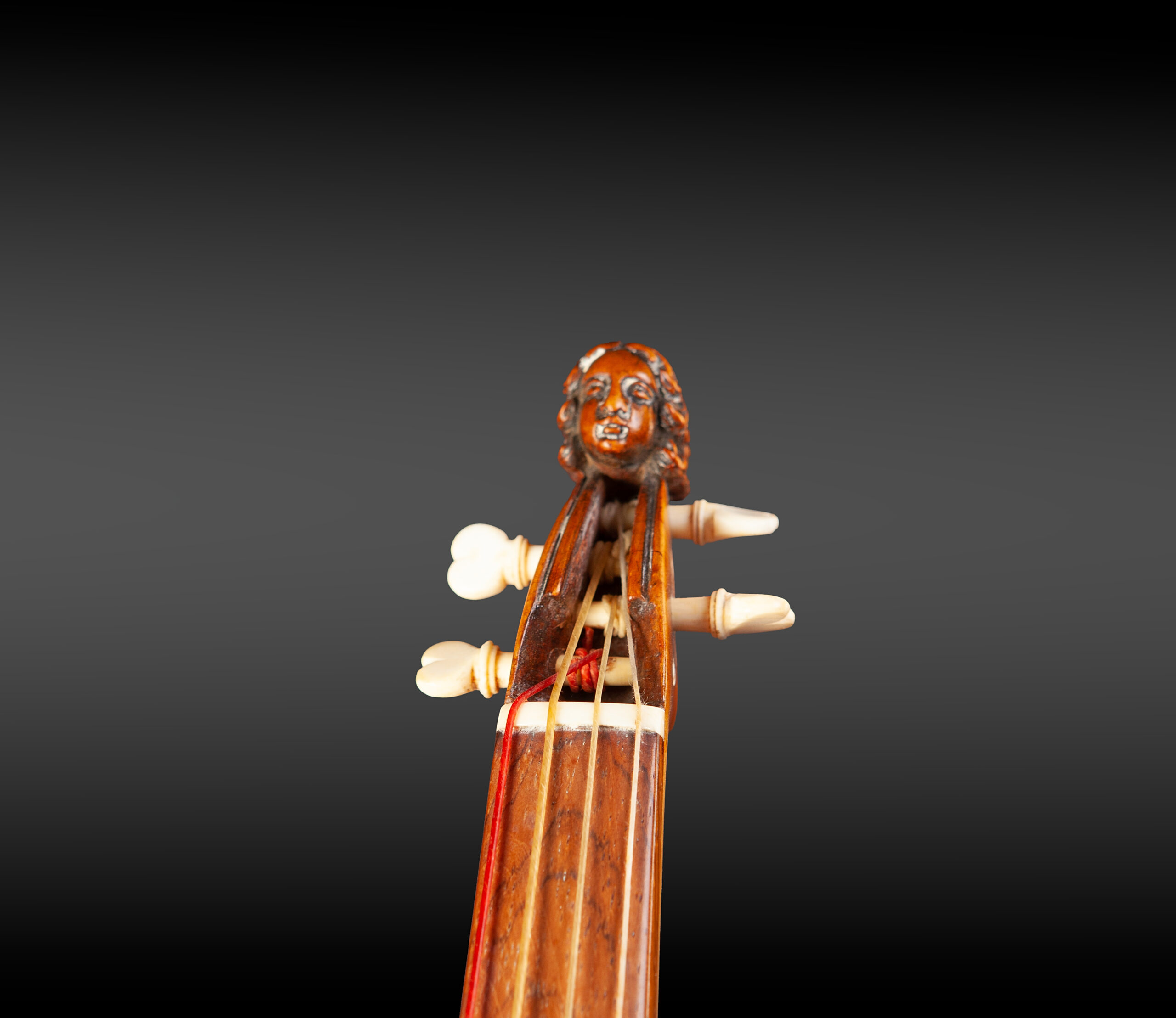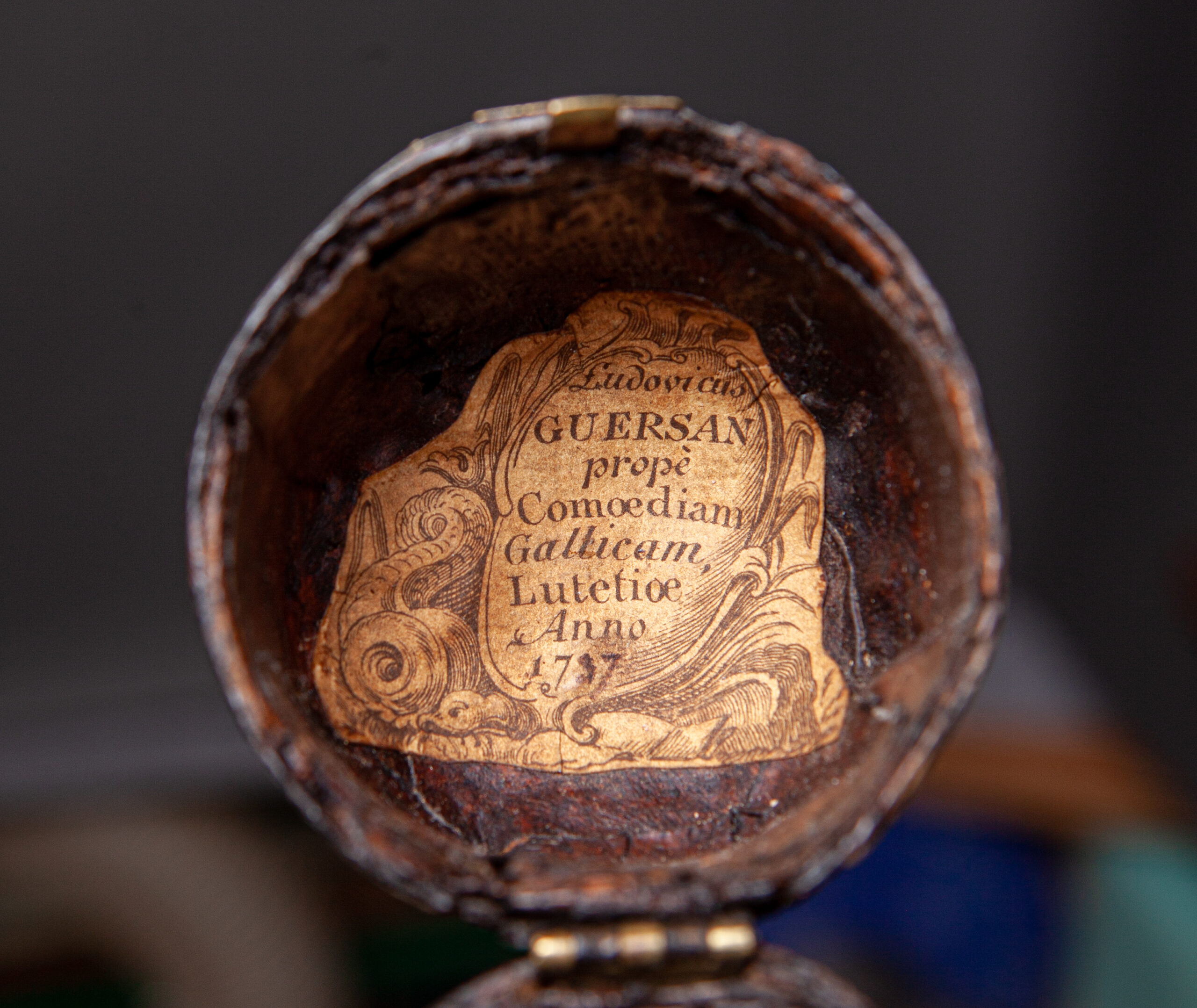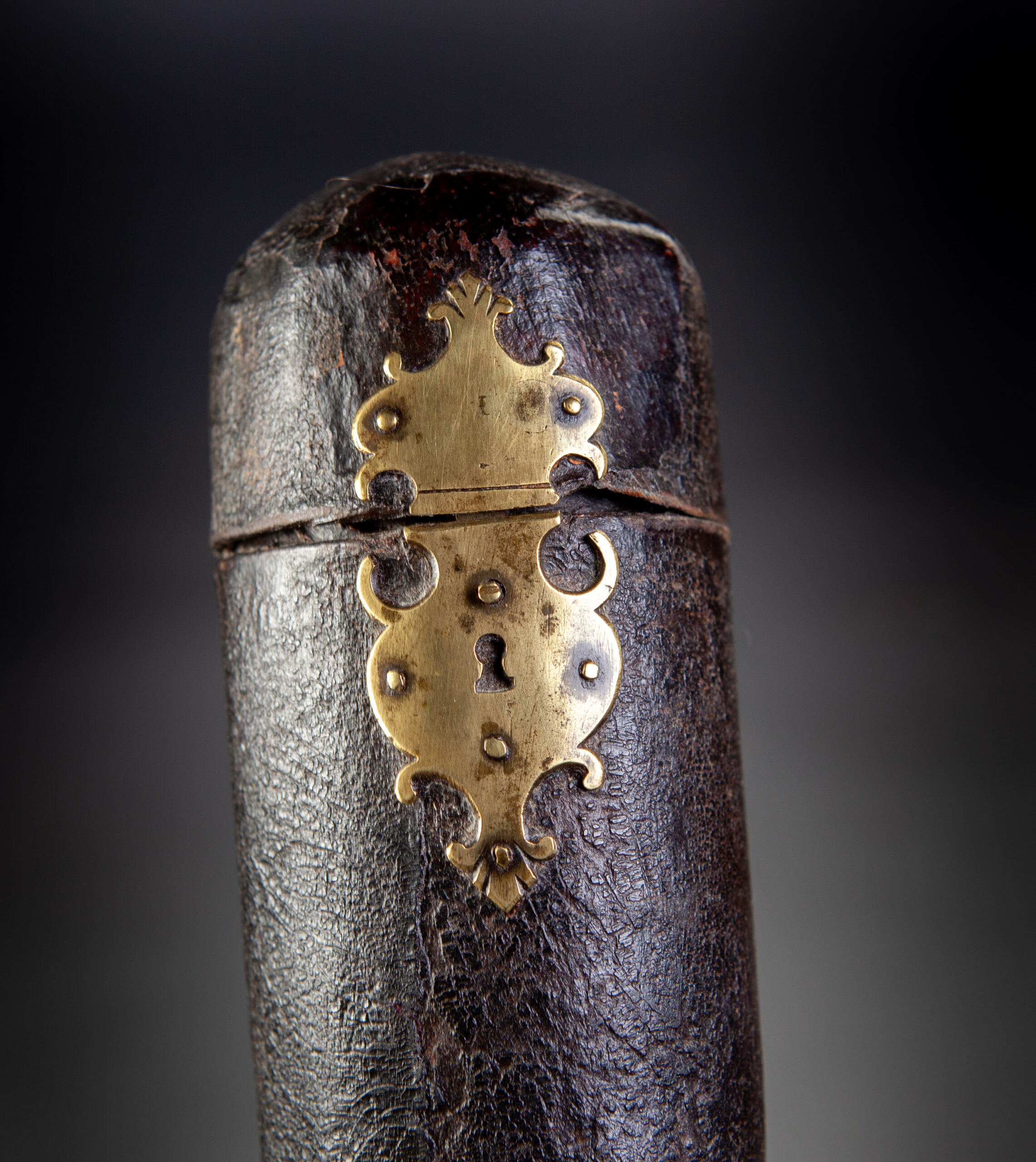HARP, 19th century
HARP of Princess Royal Victoria of the United Kingdom, Empress of Germany and Queen of Prussia.
by Richard Blazdell, harp maker and teacher to Queen Victoria.
London 1843.
Alexander Richard Blazdell, a harp maker of German origin based in London, was the supplier to the Belgian royal family and the harp teacher to Queen Victoria.
This harp was specially made for Princess Royal Victoria Adelaide of the United Kingdom, preparing her to play with her mother. Eldest daughter of Queen Victoria, she became Empress of Germany and Queen of Prussia by marriage to German Emperor Frederik III.
Signed: “Blazdell Patent Harp Maker, No.34 Charlotte Street Fitzroy Square London No 4056′, with a gold plaque, ‘V (Crown) R’ presented by the maker to HRH The Princess Royal by kind permission of her mother well-loved, HM the Queen. Victoria November 21. / 1843 for his third birthday. “
The harp has a golden neo-Gothic decoration on a cream background (bird’s-eye maple). Irish shamrocks, Scottish thistles and English roses adorn the console table. The capital is topped with a crown. Two dolphin feet adorn the front of the harp, and two claw feet adorn the back.
The soundboard is decorated with palmettes, and foliage scrolls with characters painted in gold representing the different ages of life (child, young adult, adult).
The instrument is preserved in its original mahogany case covered in crimson velvet. With its ivory satin cover, embroidered with silver thread, Irish shamrocks, Scottish thistles and English roses forming a crown around the letters V (Victoria) and R Regina).
NB: The instrument is in working order. We observe traces of wear on the satin cover, some traces of old and minimal restorations on the box, the feet of the harp and some decorative gilded stucco fillets.
Harp with 24 strings with forks and simple movement, operated by seven ivory pedals.
Height: 95.5cm.
CETERA
Great Cittern
CORSICA 19th c.
Cittern of Italian inspiration but
of an very original making using local essences.
One of ten ceteras found to date
GUITAR-MANDOLIN
Italy, 19th-20th century.
Double instrument, one side of which is that of a guitar and the other that of a mandolin.
The resonance box is made up of rosewood sides and a back of the same species located halfway up the sides. The soundboards, made of spruce, are decorated with floral motifs, musical instrument and a musician, presented in tinted wood marquetry cartridges. The protection plates are made of faux tortoiseshell inlaid with mother-of-pearl.
Length: 97cm. Width: 35.4cm. Height of sides: 10.8 – 11.6cm
HARP – GUITAR
Sicily, 19th-20th century.
The back and sides are made of maple and the top is made of spruce. The two black varnished maple necks are respectively fitted with six and seven strings.
The decoration of inlaid butterflies on the table and the border made of broken mother-of-pearl and shellac are among the many characteristics of violin making from Catania in Sicily.
Apocryphal label by Giacinto Bertolazzi in Milan
Length: 104cm. / Width: 51.2cm. / Side height: 12 – 13.3cm. / Scale: 64.6cm.
HARP – GUITAR
Casimir LALLIET in Paris (1858-1923)
This instrument was presented at the Universal Exhibition in Paris, 1900.
It is described as follows in the jury report:
“Mr. Lallié (sic) built a sort of theorbo with projecting pegs for the bass strings, the back and sides in Hungarian ash.
The sound is a little soft. […] The work of Mr. Lallié deserves praise; all its woods are chosen with care, and the small number of instruments can satisfy the most demanding amateur.
International jury report: Class 17: Musical instruments.
Provenance: Coll. François Callas – S.V.V. Vichy.
Length: 110cm. width: 26.3cm. Scale: 62.6cm
Biblio: “International Universal Exhibition of 1900 in Paris. – Report of the International Jury. » Imprimerie nat²ionale, Paris 1901.
POCHETTE
France 19th century.
Violin of a dancing master from the Parisian school. The back and sides are made from a single piece to which the spruce sounboard is glued.
Traces of an important old and good quality restoration are visible on the background. Following a serious fracture at the base of the neck, at the heel, a joint was made to restore the instrument to playing condition. The work is of great mastery, and nothing has been done to hide its existence.
The pochette is housed in an English mahogany case, custom made towards the end of the 19th century.
Length: 41.4cm. Length of the body: 18cm.
Provenance: Collection of luthier Charles Enel (1880-1954) then Frédéric Boyer (1926-2005).
CHILD HURDY-GURDY
Mirecourt 19th c.
Flat body so-called “guitar hurdy-gurdy” whose body, in maple, is varnished in a honey color, as well as the spruce top. The pegboard, also in maple, is fitted with four rosewood pegs. The keyboard, wheel cover and tailpiece are veneered with ebony and lined with fine mother-of-pearl and ebony marquetry?
The shape of the instrument, the woods used, and the sculpture of the head contribute to attributing this hurdy-gurdy to the workshop of Nicolas Colson (1795-1871) a luthier in Mirecourt whose son Joseph (1829-1882) sculpted the pegs with the faces features.
Keyboard composed of ten rosewood keys.
The bottom bears traces of poorly stamped iron marks: F. BAR…(Barbé?), as well as a (bowmaker’s?) mark E. Philibert…
Length: 41.5cm Width: 17.4 – 12.8cm.
Provenance: Collection of luthier Charles Enel (1880-1954) then Frédéric Boyer (1926-2005).
GUITAR by Sébastien Renault in Paris
18th century.
Sébastien Renault (Paris, 1750-1829) was received as master luthier on June 27, 1777, the same day as his colleague François Chatelain. The two luthiers each had a personal workshop and then they joined forces around 1785.
The guitar presented here, signed by Sébastien Renault alone, probably dates from the period between 1777 and the mid-1780s.
It has the characteristics of Baroque guitars with five choirs and presents an ivory rosette, sculpted in bas-relief of a rural scene, already announcing the decor of the pre-Romantic instruments.
The body is made of red-brown varnished curly maple; the table is made of spruce edged with ebony and mother-of-pearl marquetry framed with ivory fillets. The handle and head are veneered with ebony, and it is fitted with ten ebony pegs.
Length: 94.2cm Width: 20.3 – 26.5cm. Body height: 9.5 – 9.9 cm
CISTER
Germany, 17th – 18th century.
Five-course cittern probably from Thuringia, based on certain making elements such as the mounting of the neck, the shape of the head coat of arms and the choice of wood.
The protruding parts on the back of the pegbox bear witness to an older period than those of instruments of this type observed until then. Characteristic of the cisterns made in the 16th century in northern Italy, this hook with scalloped shapes brings a practical and aesthetic element that we have never encountered on cisterns after the 16th century. Whether in private or public collections.
The soundboard is made of fir, the back is made of plane tree. The handle and head are made of fruit wood; (birch?) The rosette in cut parchment and the replaced pegs in boxwood.
Length: 76.8cm. Width: 25.7cm. Body height: 7.2cm.
Bibliography:
Instrumentarium: Lipsiense; zistern. Musikinstrumentenmuseum der Universität Leipzig.1999.
KIT
Louis Guersan, Paris 1737.
Before being made and presented in the 19th century as masterpieces, the kits were used by dancing masters to set the rhythm and nuances during their lessons.
Louis Nicolas Guersan, 1700-1770, received maître luthier on February 16, 1723 and elected sworn accountant of the corporation on November 23, 1747, is considered the most famous Parisian luthier of his time. In addition to high-quality instruments, we owe him “an original varnish formula: alcohol varnish, which will quickly constitute one of the distinctive features of French violin making. (1)
Label printed inside the case: “Ludovicus Guersan, prope Coemediam Gallicam, Lutetiae anno 1737”.
Model in a so-called “boat” shape whose narrow maple body is extended by a neck and a fingerboard of the same wood. The spruce soundboard is opened by two sound holes and a heart at the base of the fingerboard. The pegbox is sculpted with a woman’s head according to the Parisian fashion of the time.
The instrument, kept in its leather-covered wooden case, has not undergone any visible restoration.
Length: 40.5cm Width: 4.2cm.
Provenance: Collection of luthier Jacques Français, New York, (1923-2004).
Bibliography :
- Histoire de la lutherie parisienne du XVIIIe siècle à 1960. Tome II : Les luthiers du XVIIIe siècle. Sylvette Milliot. Les amis de la musique ed. Spa, 1997. (1)
- Maîtrise et jurandes dans la communauté des maîtres faiseurs d’instruments de musique à Paris: Jean Jeltsch, Denis Watel. In « Musique- Images – Instruments ». Revue d’organologie n°4 sous la direction de Florence Gétreau.
